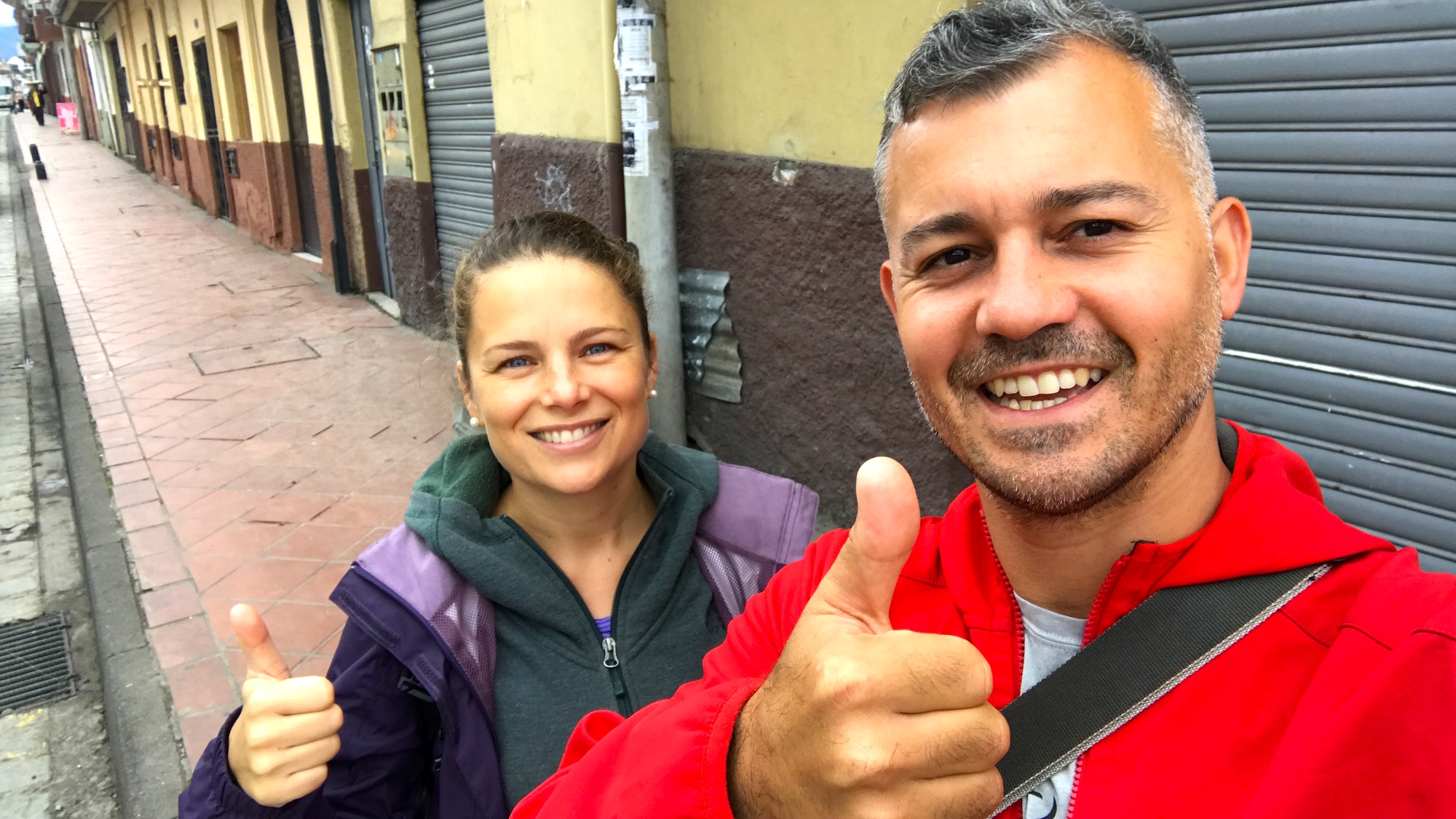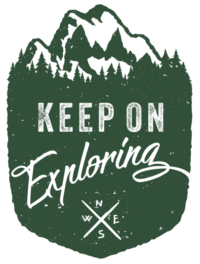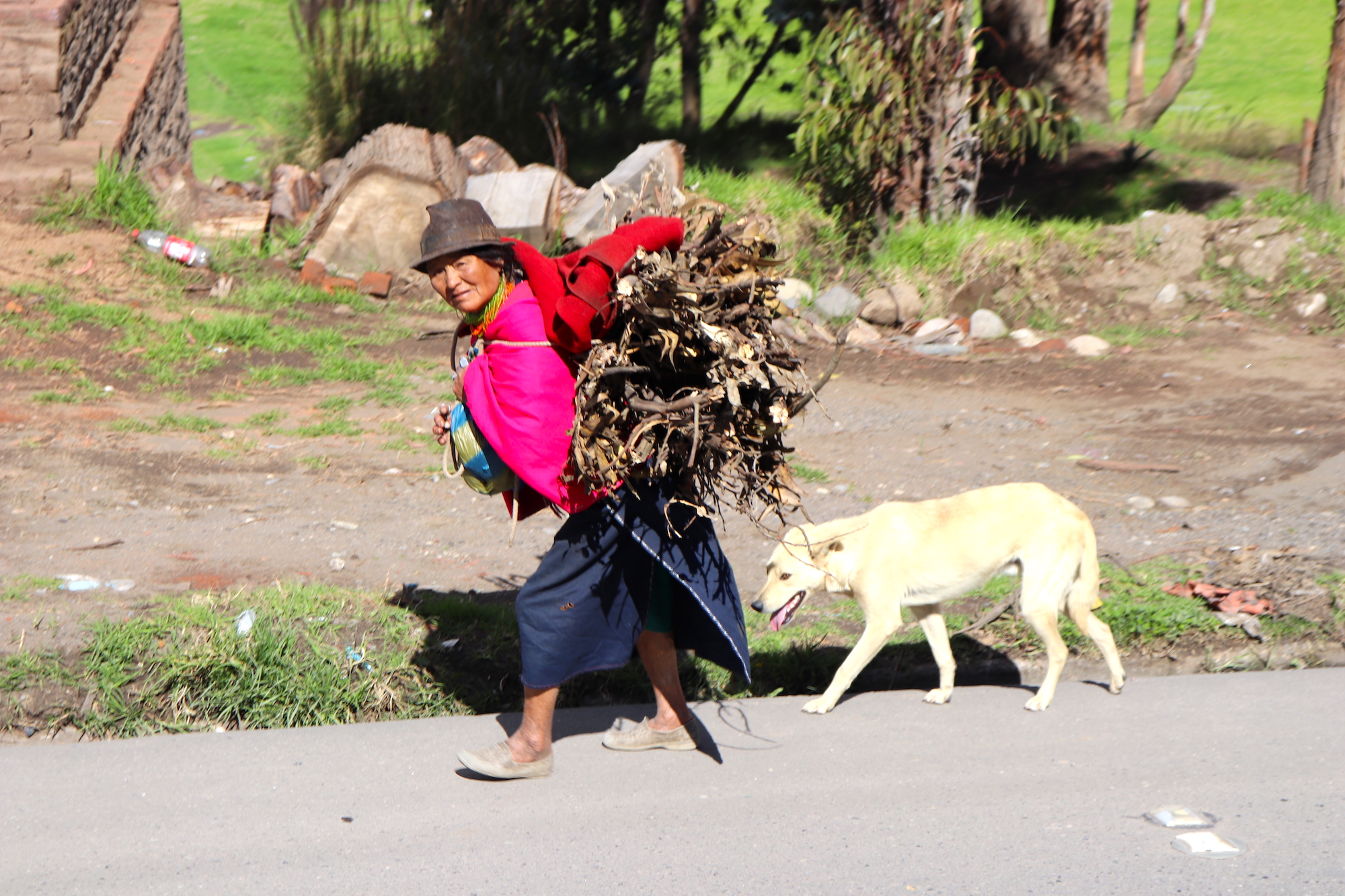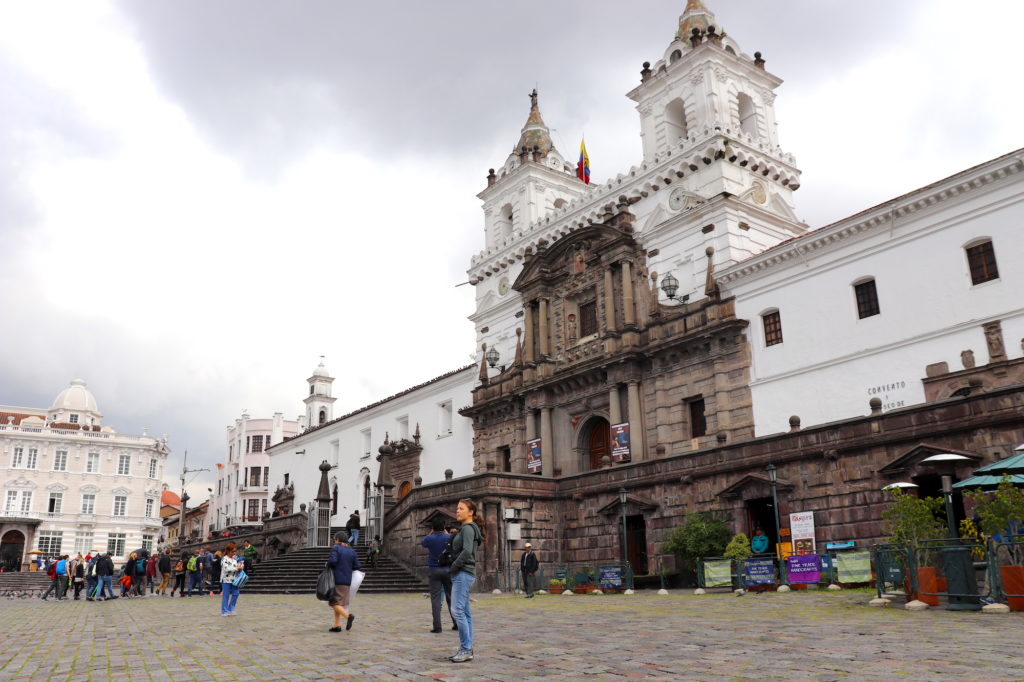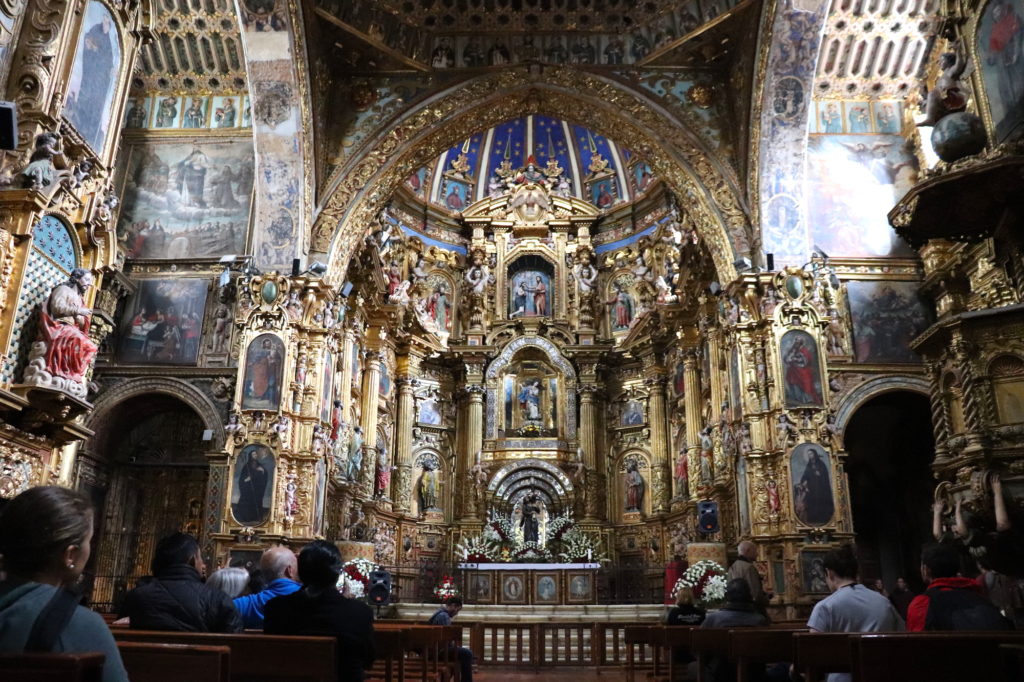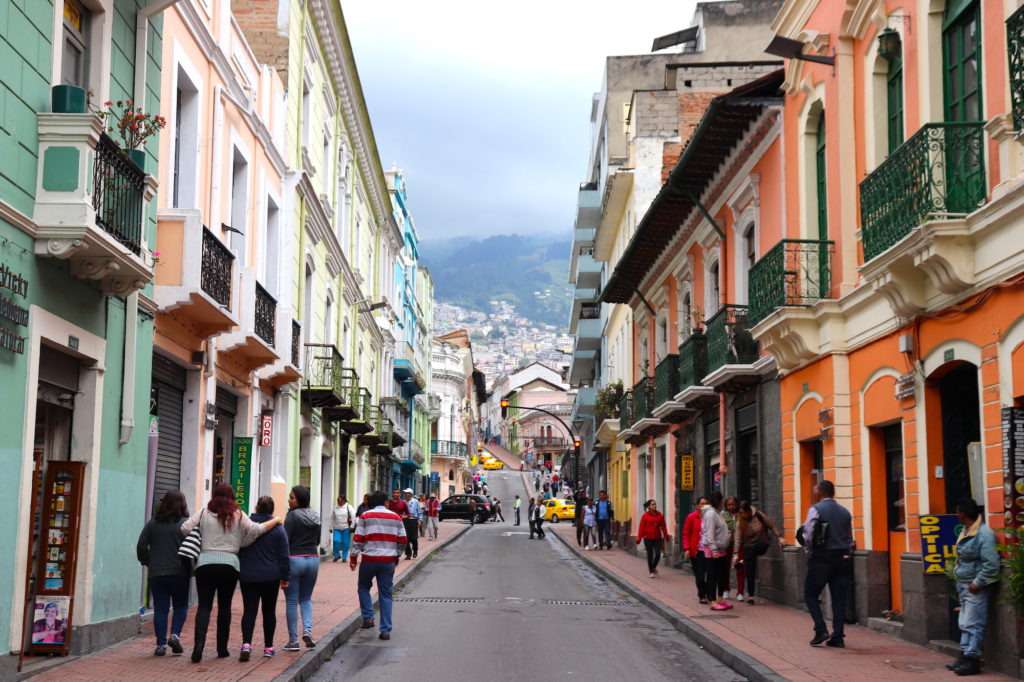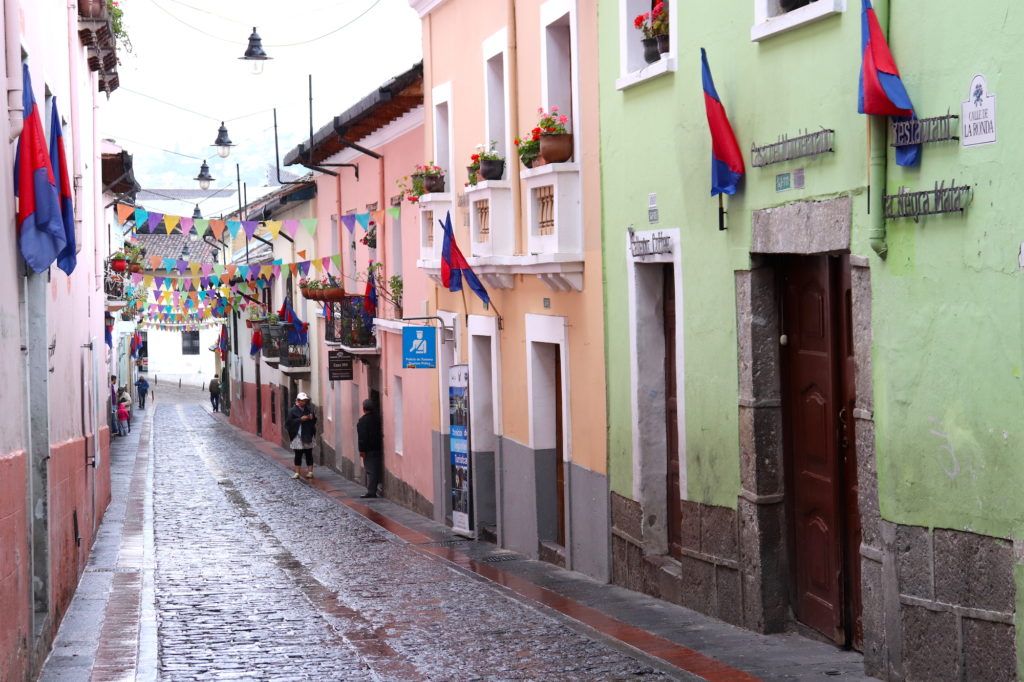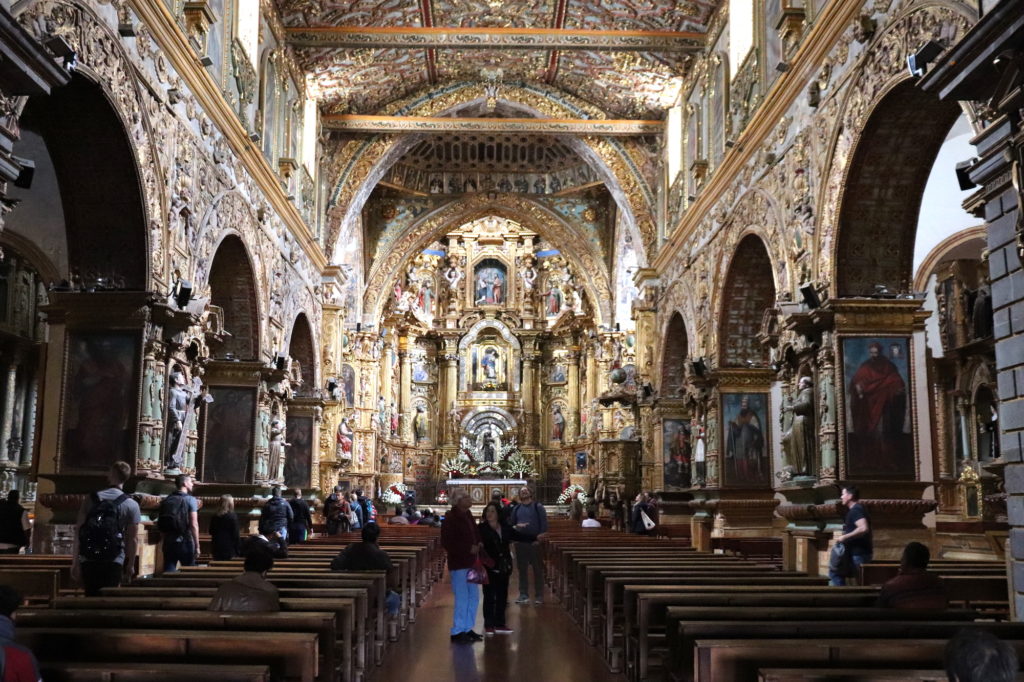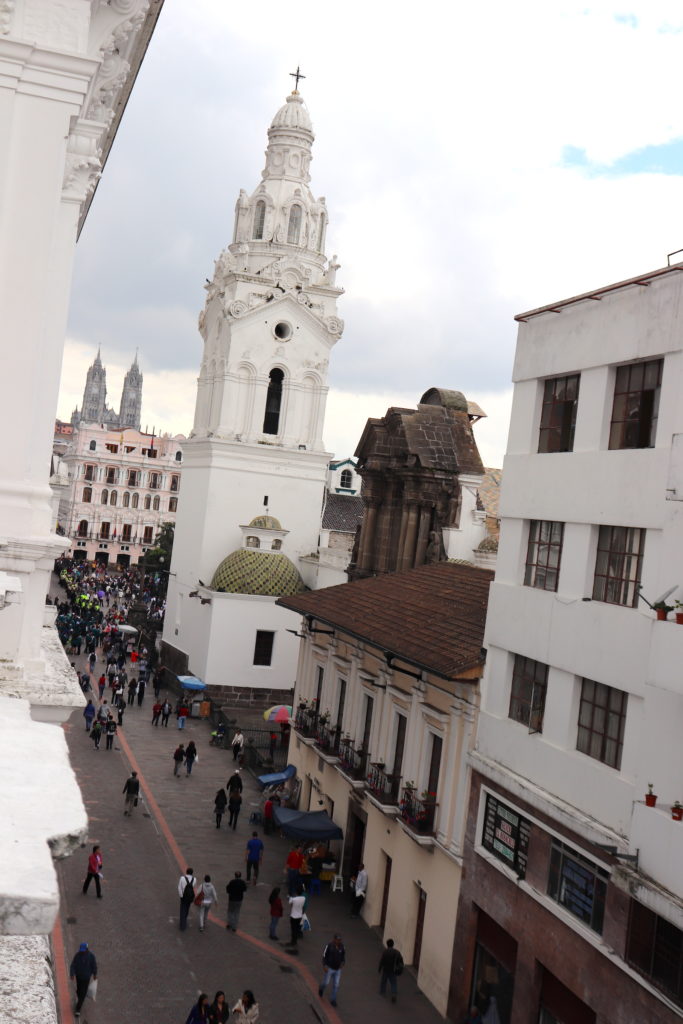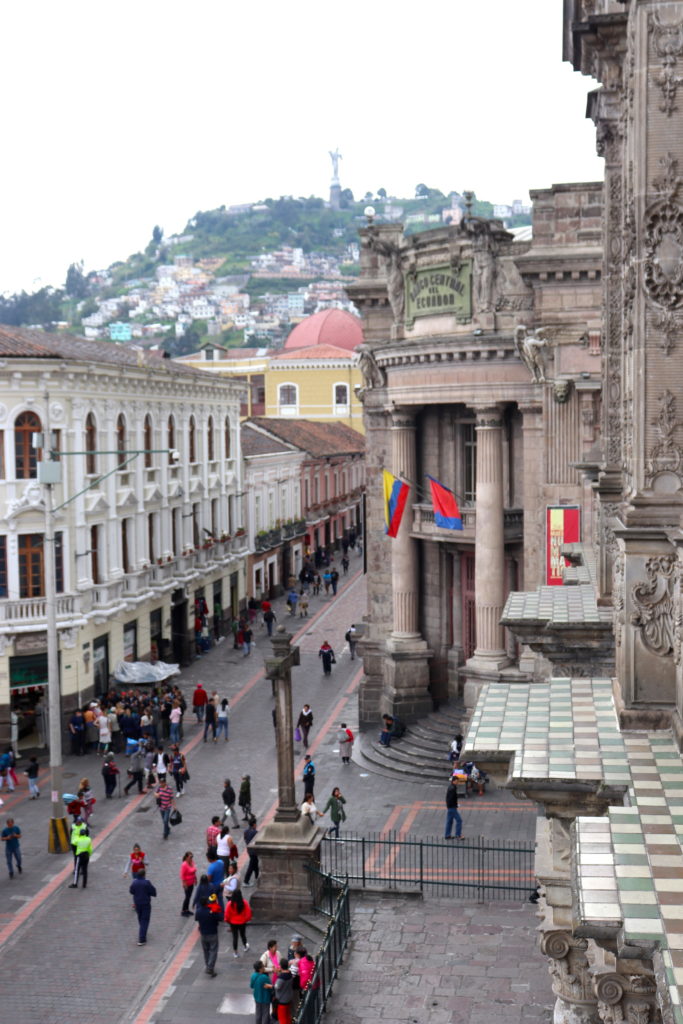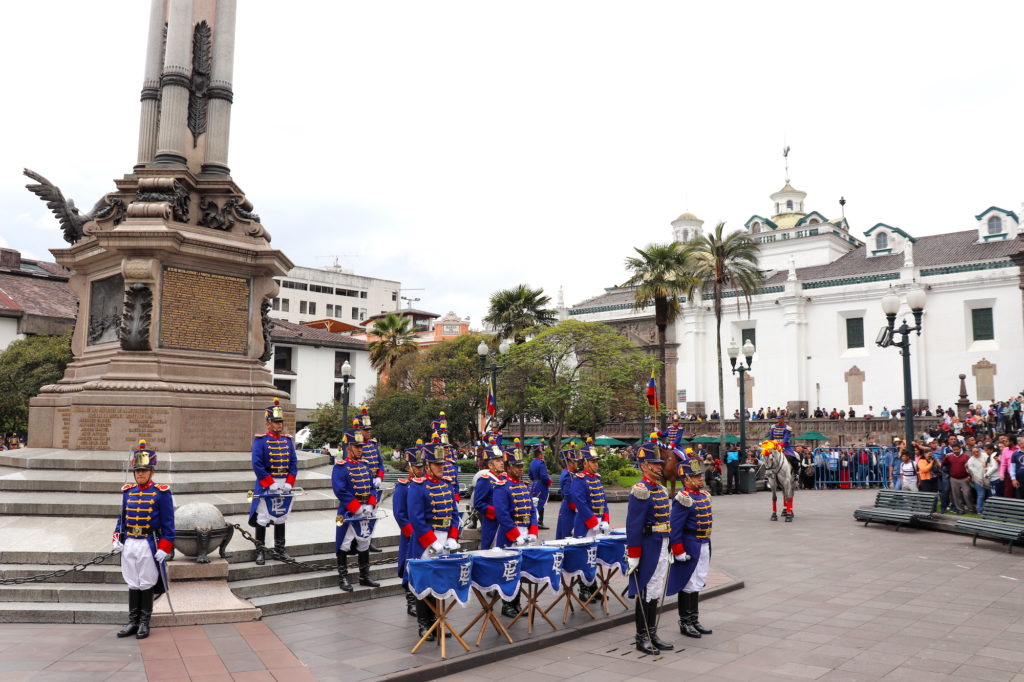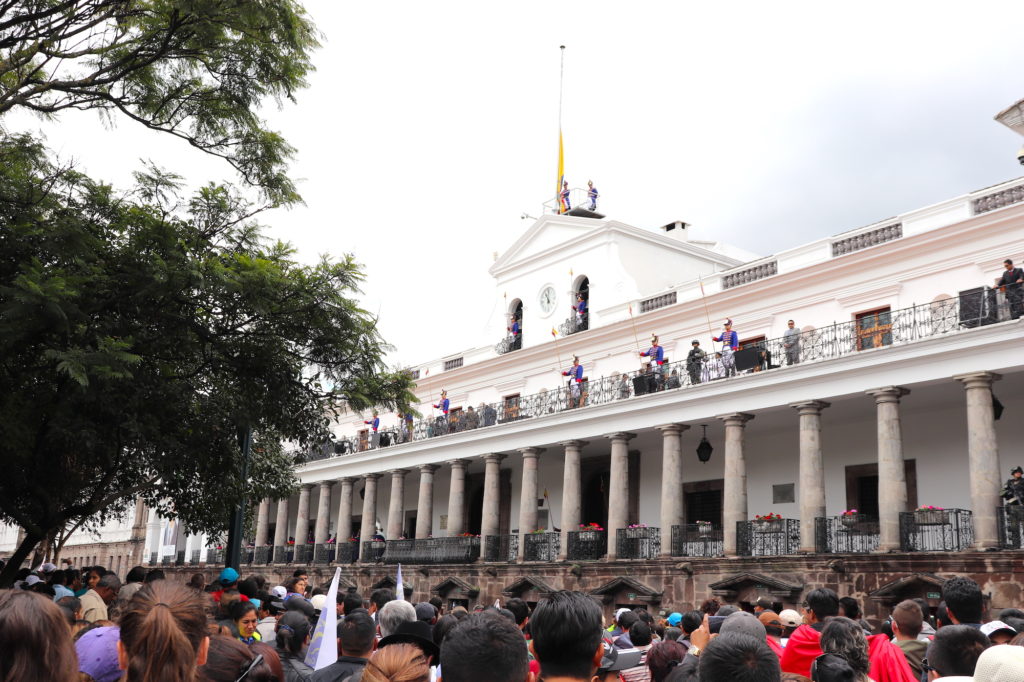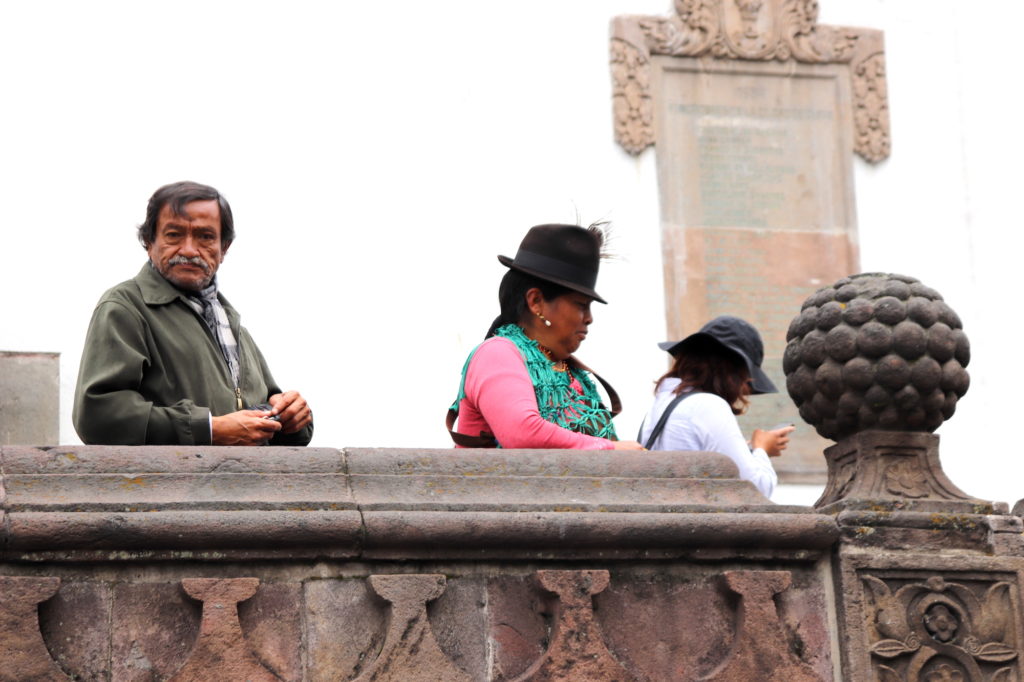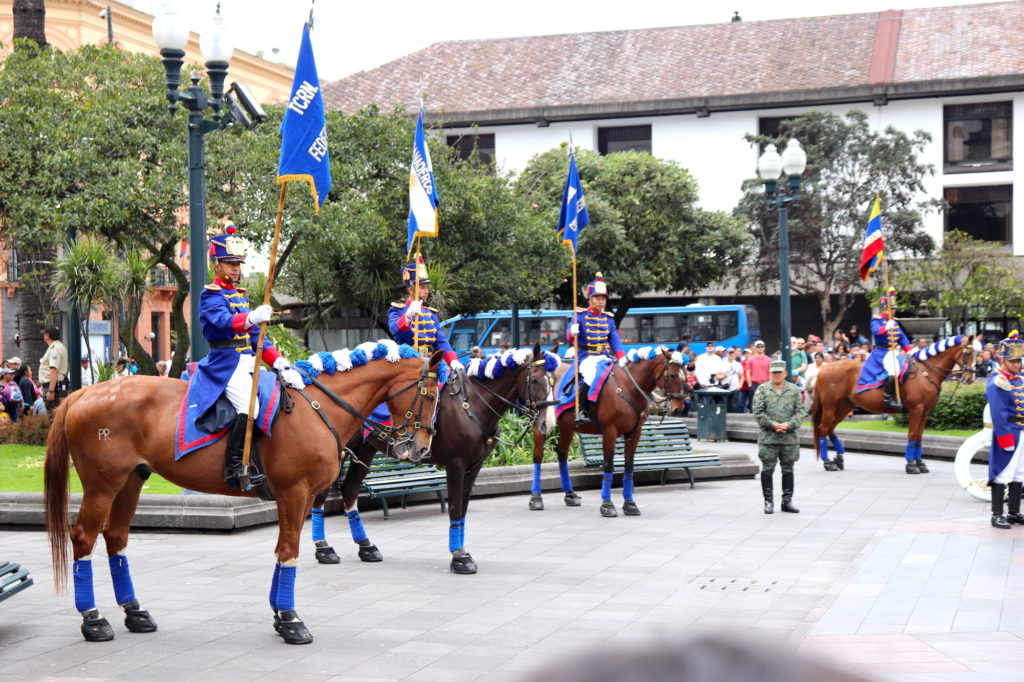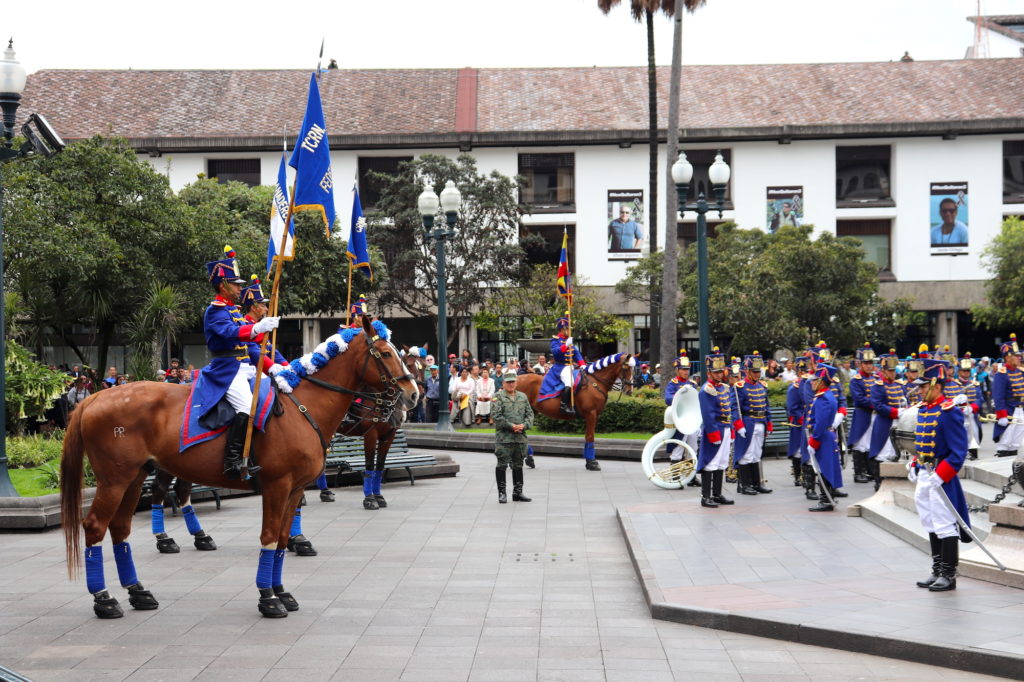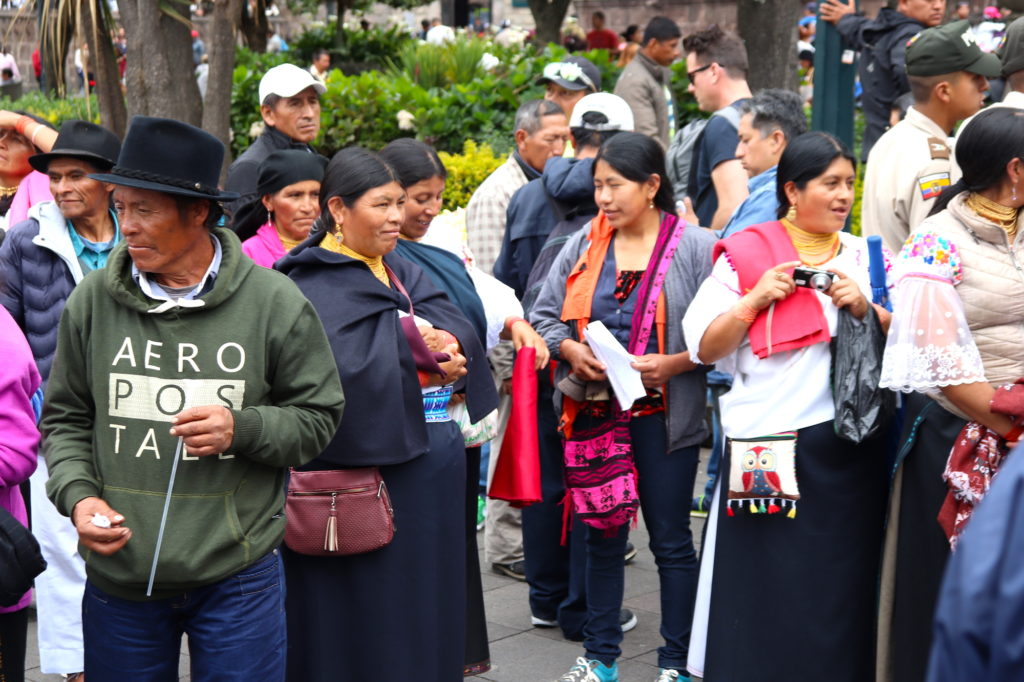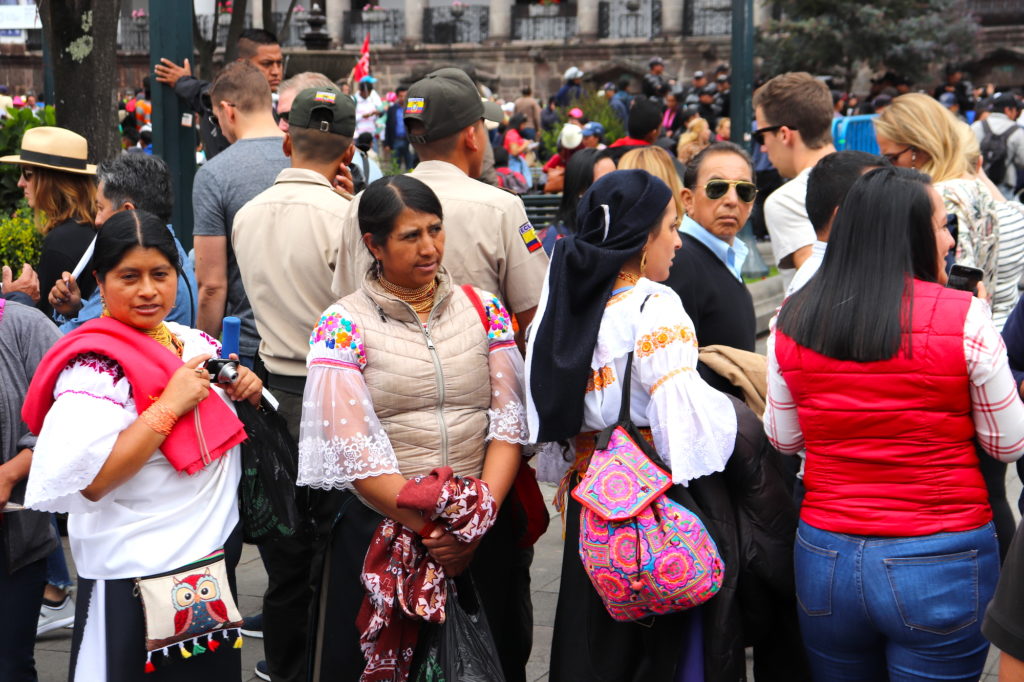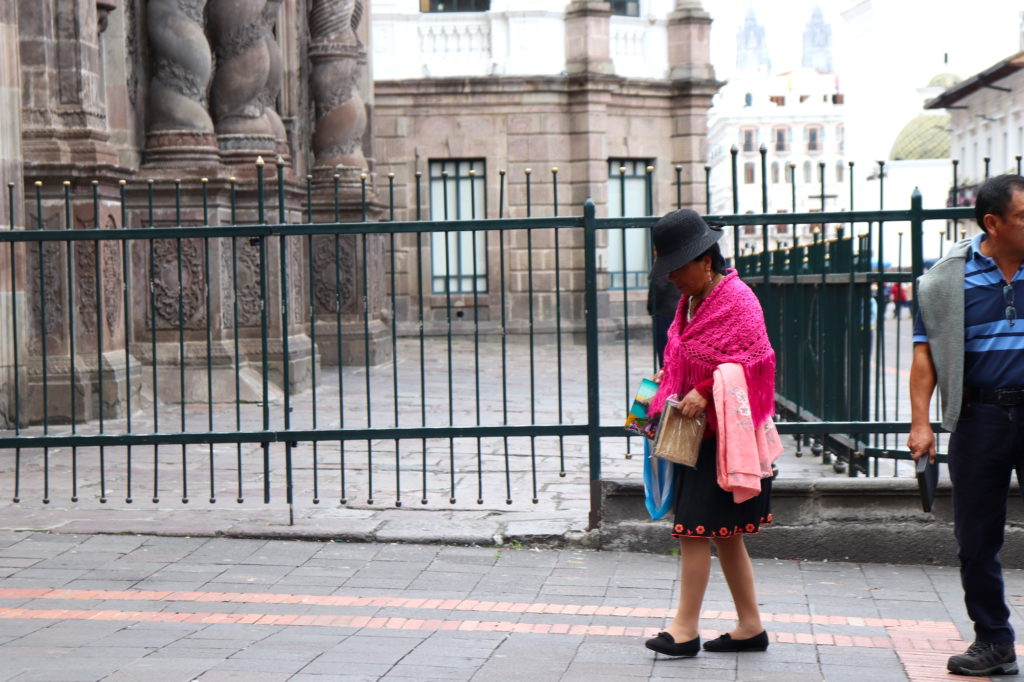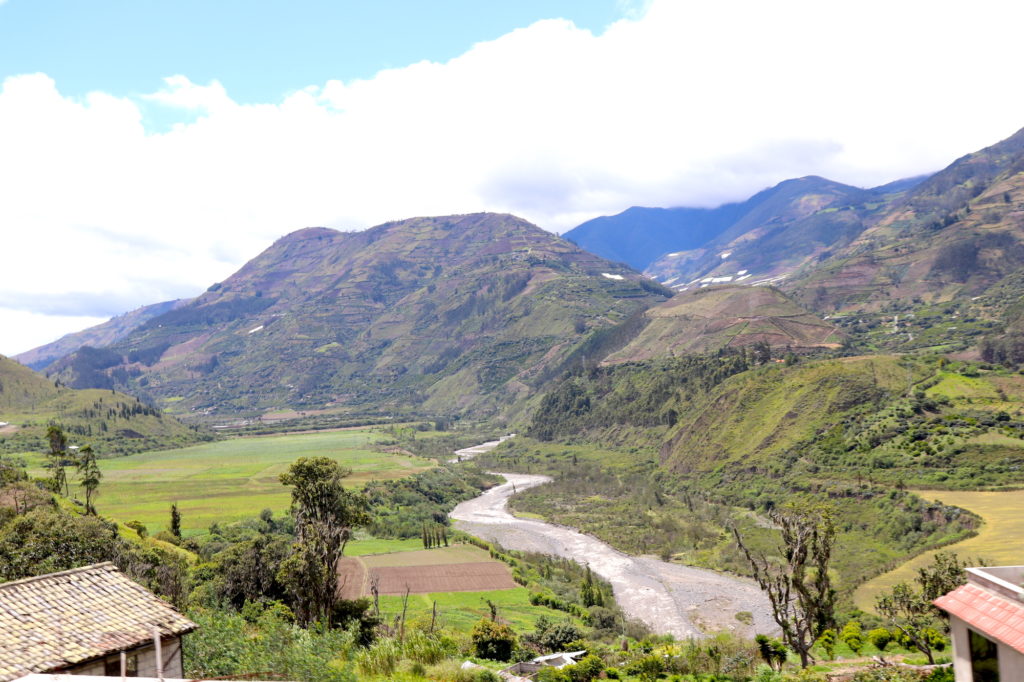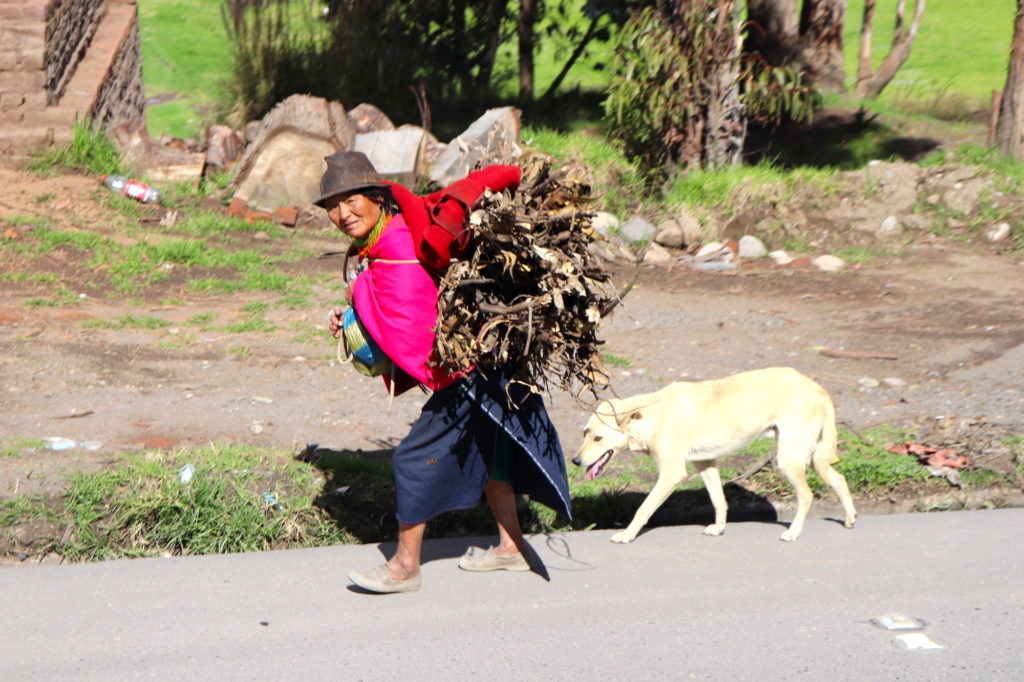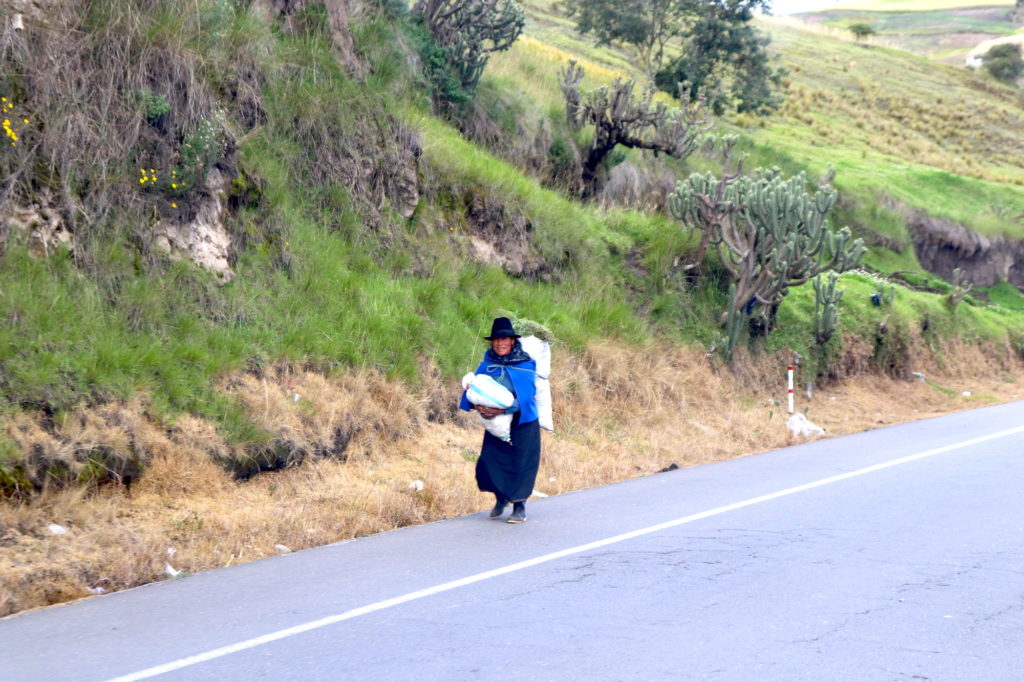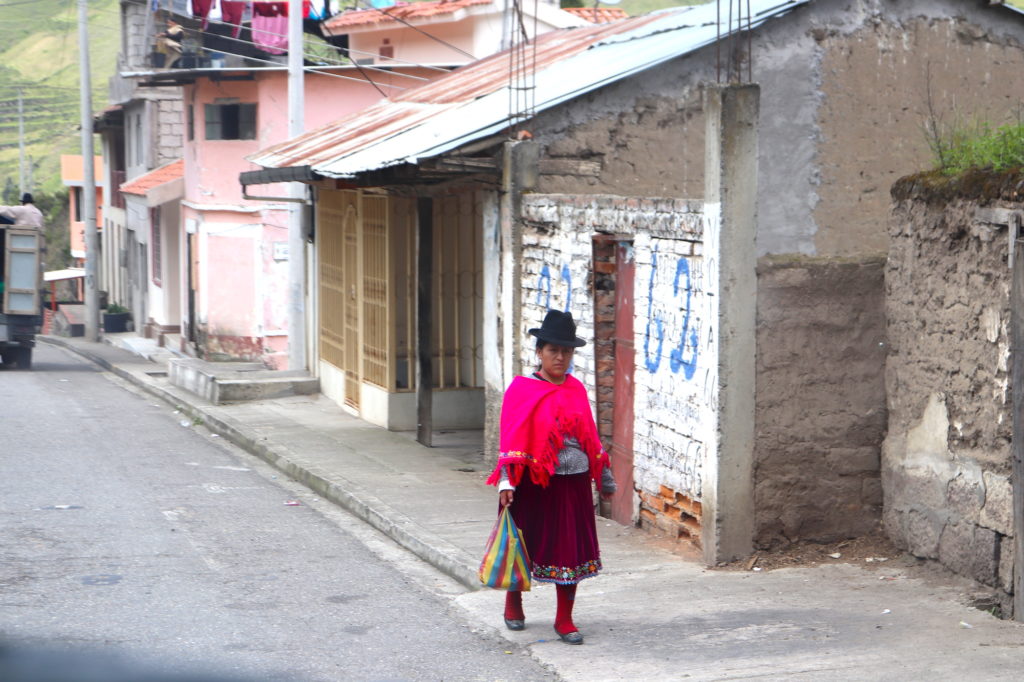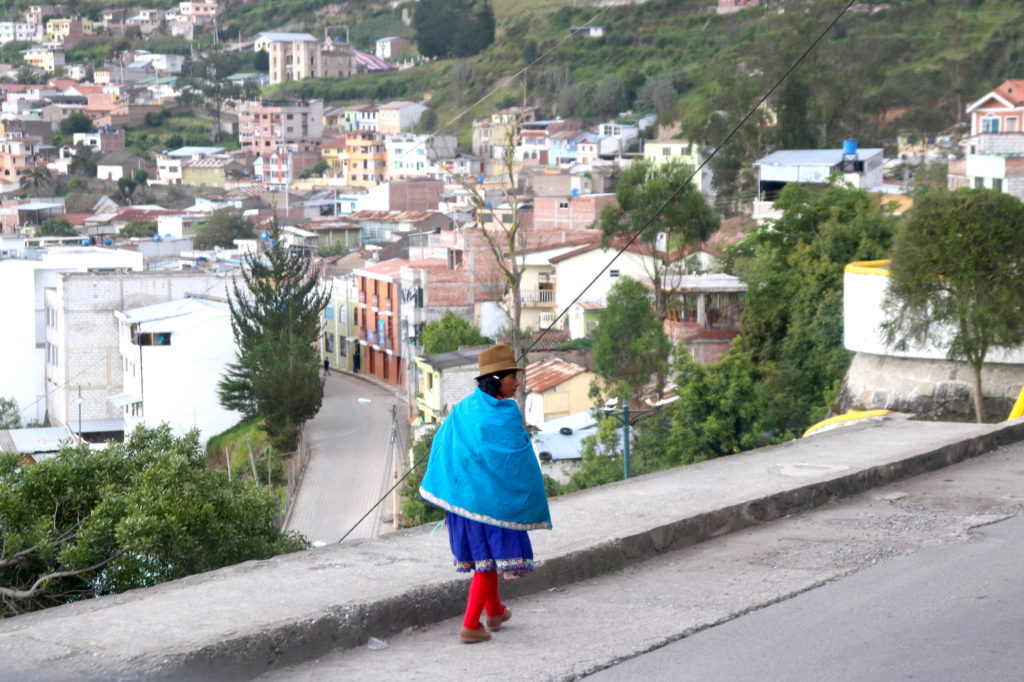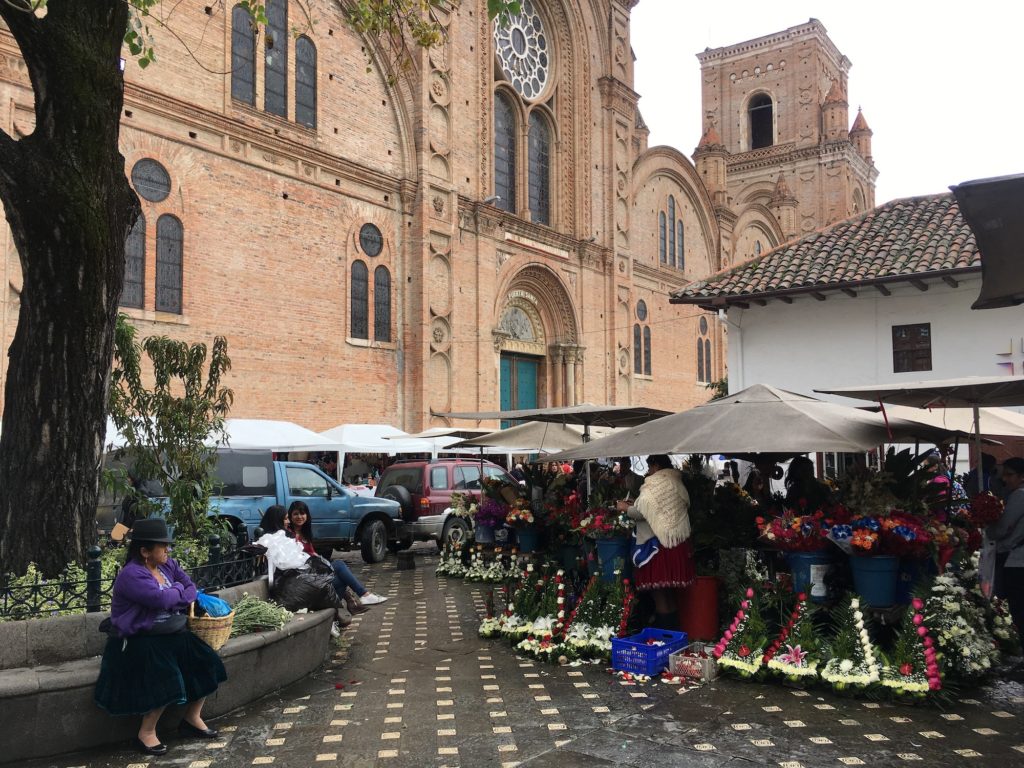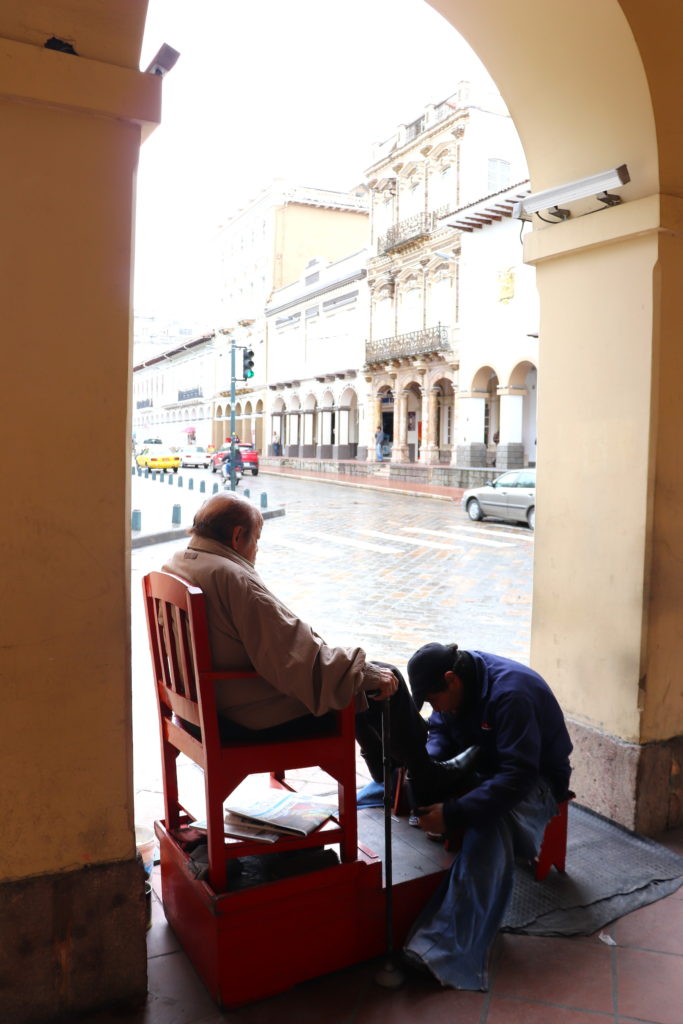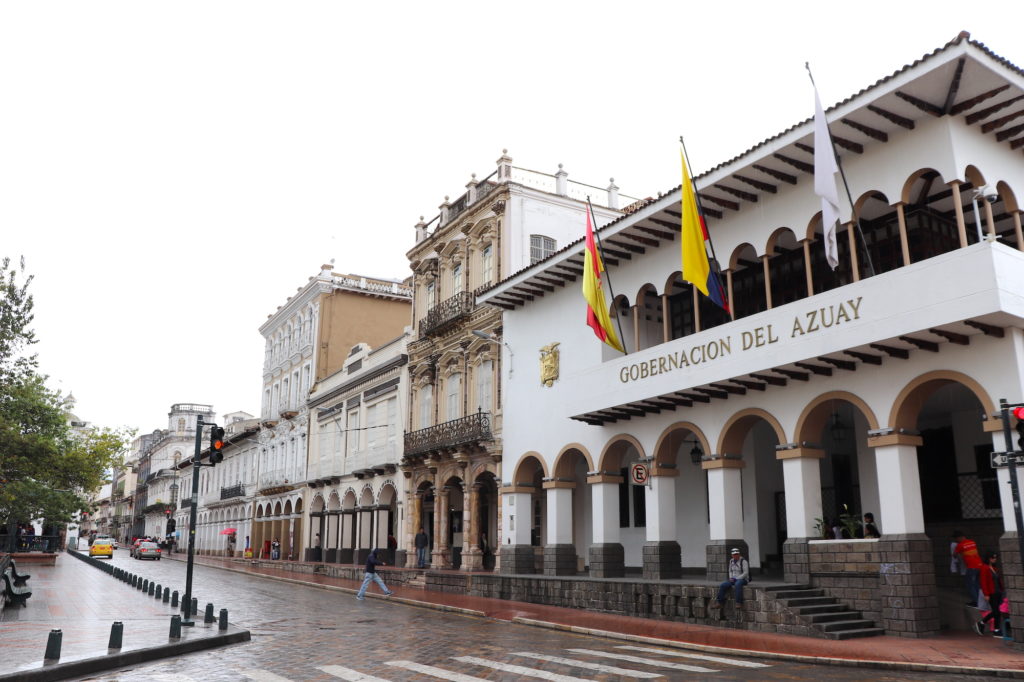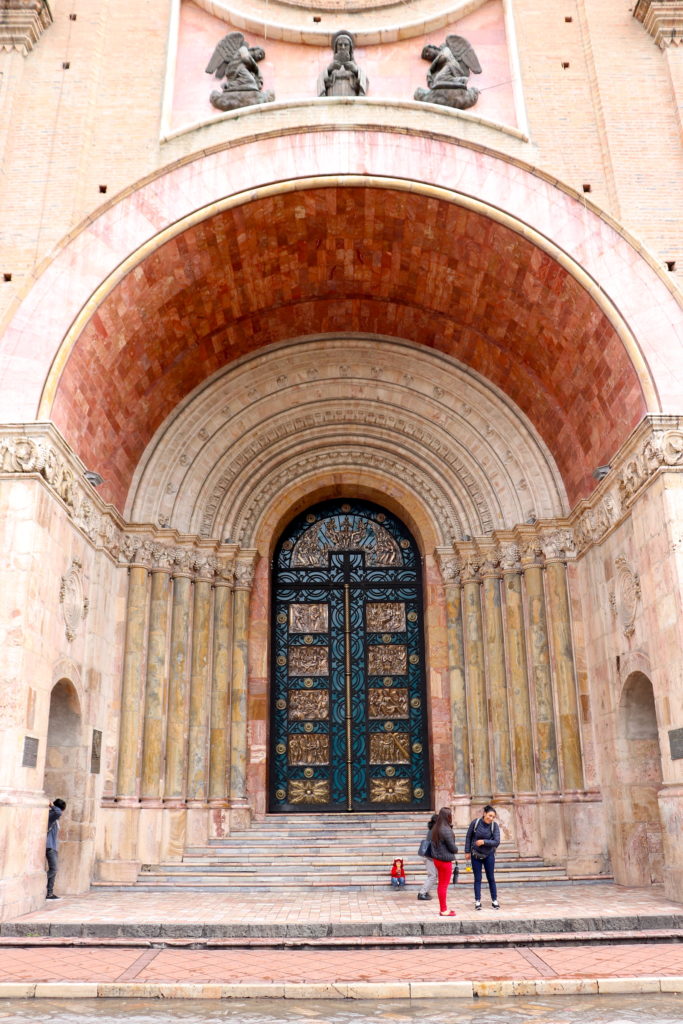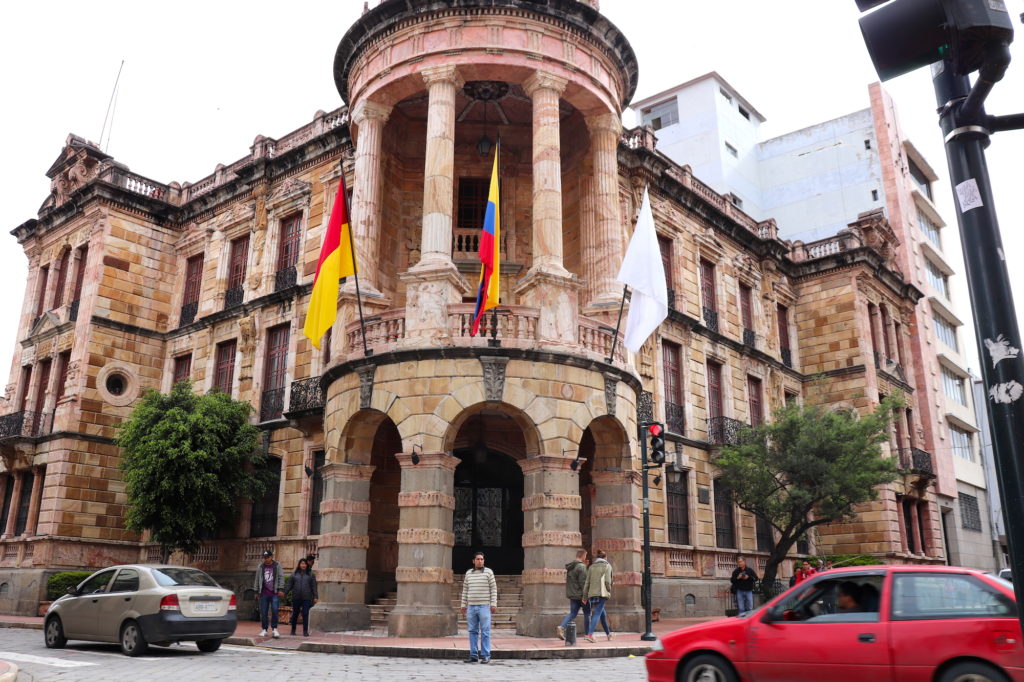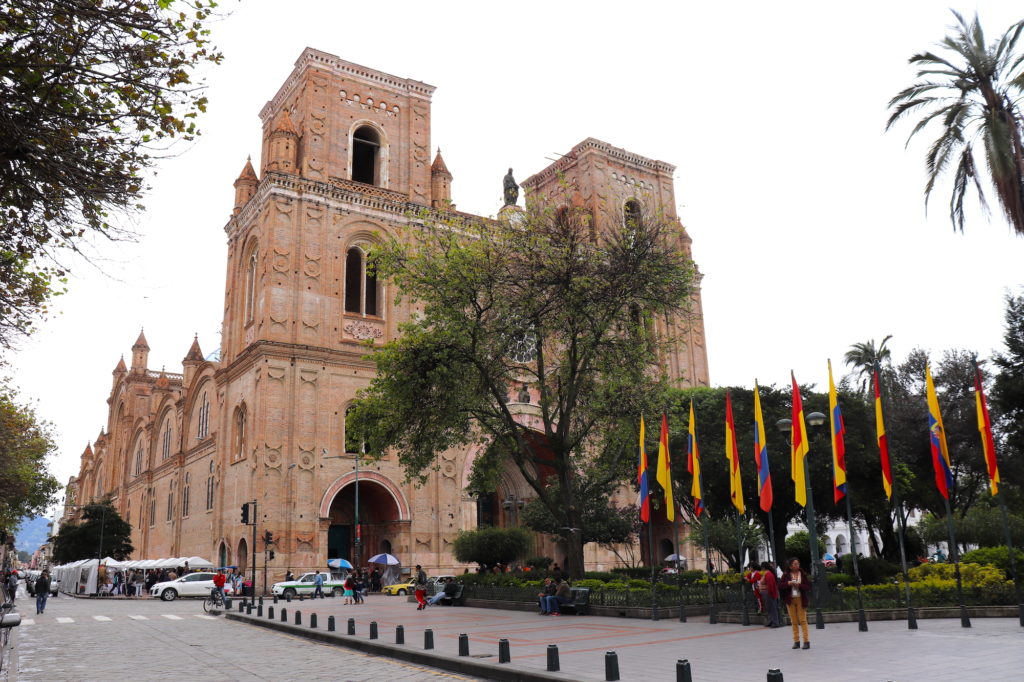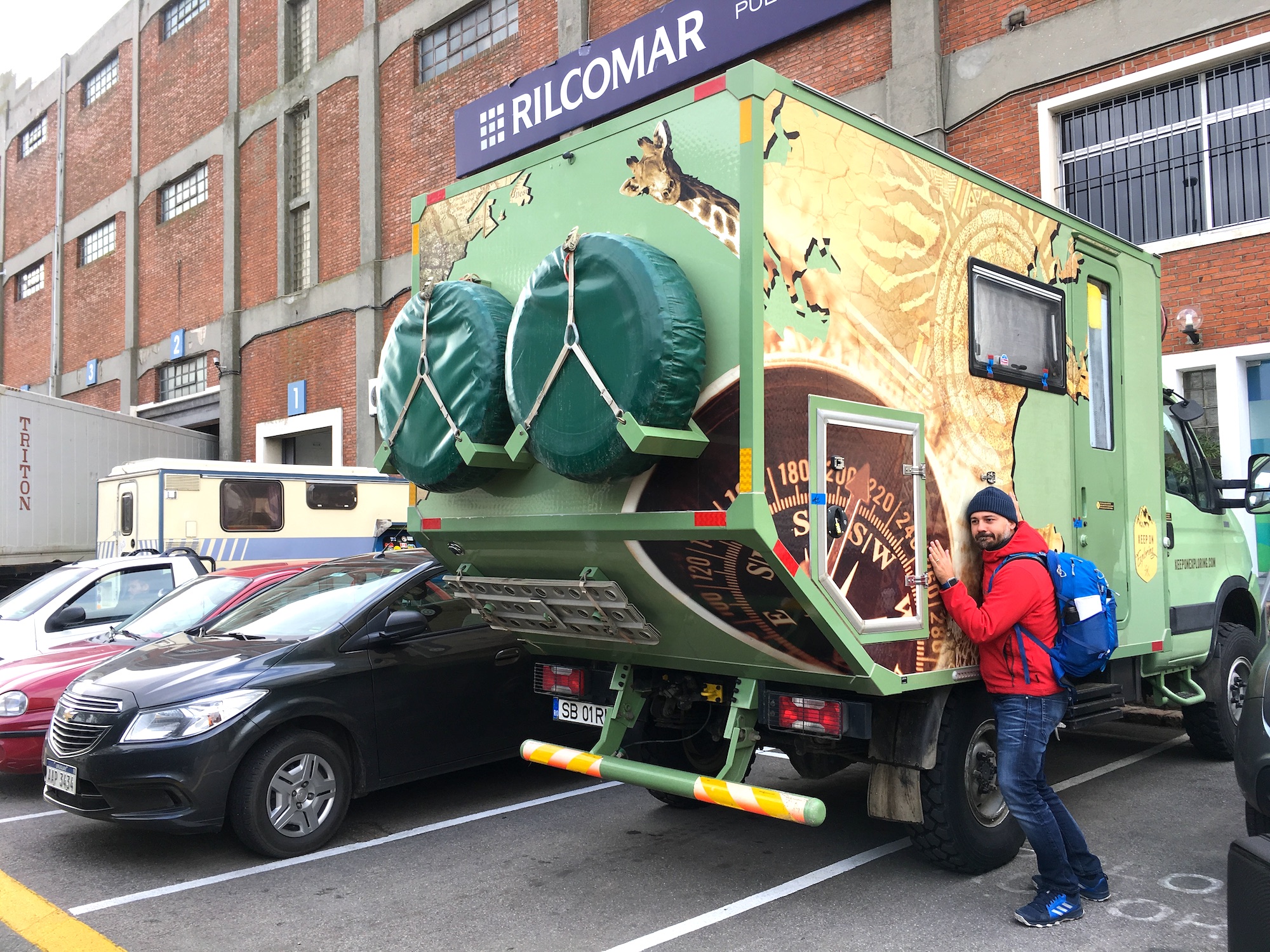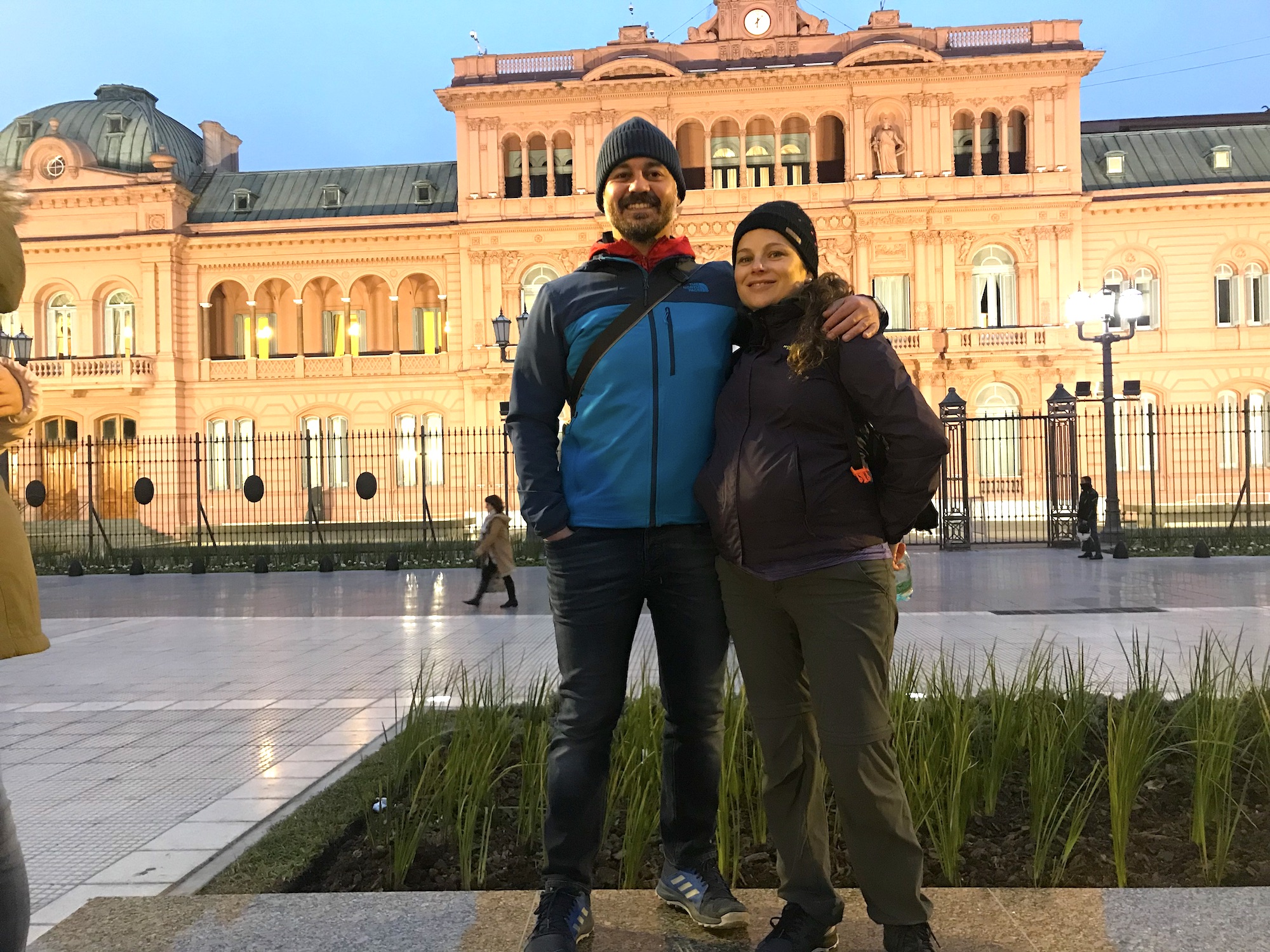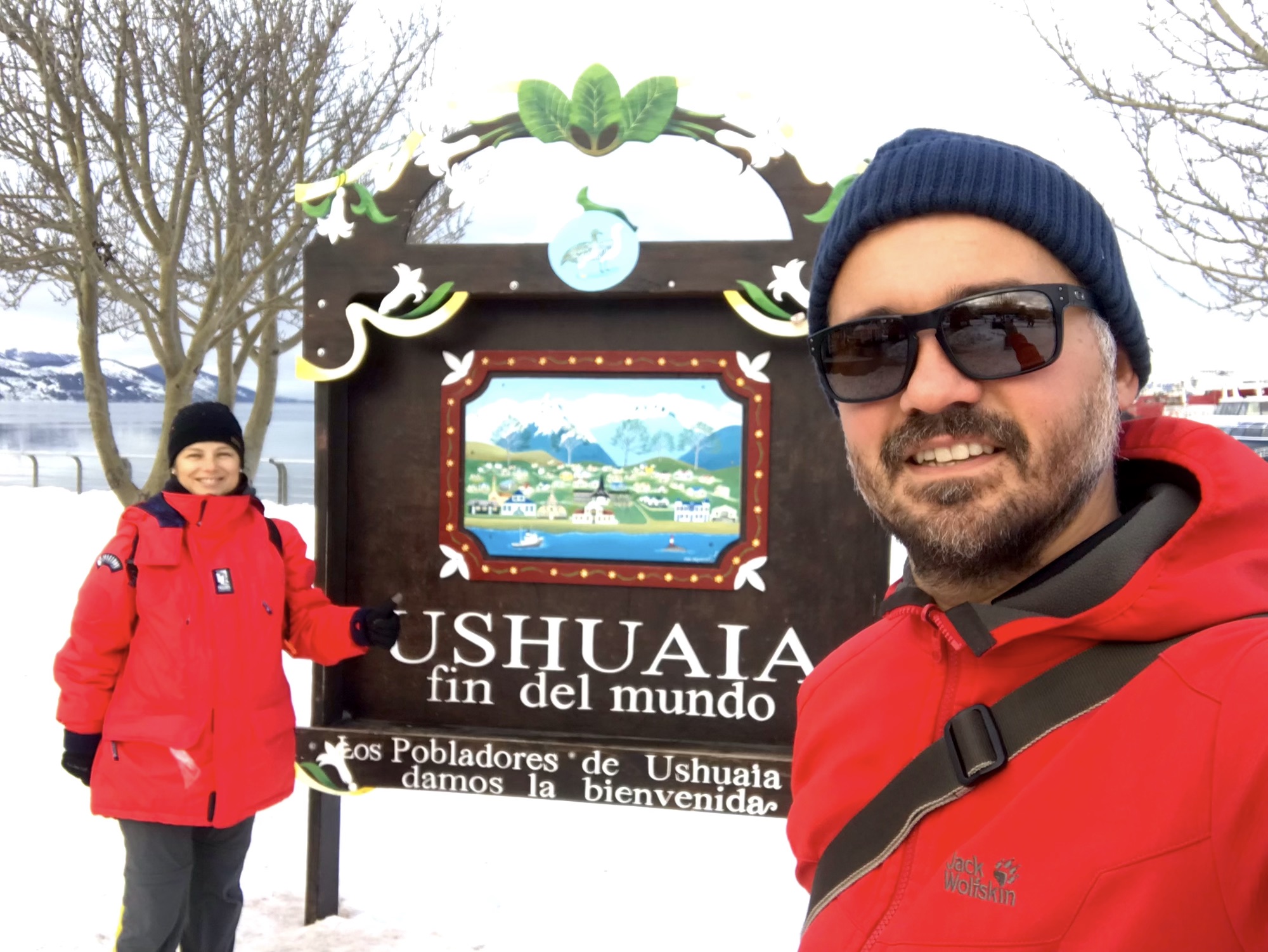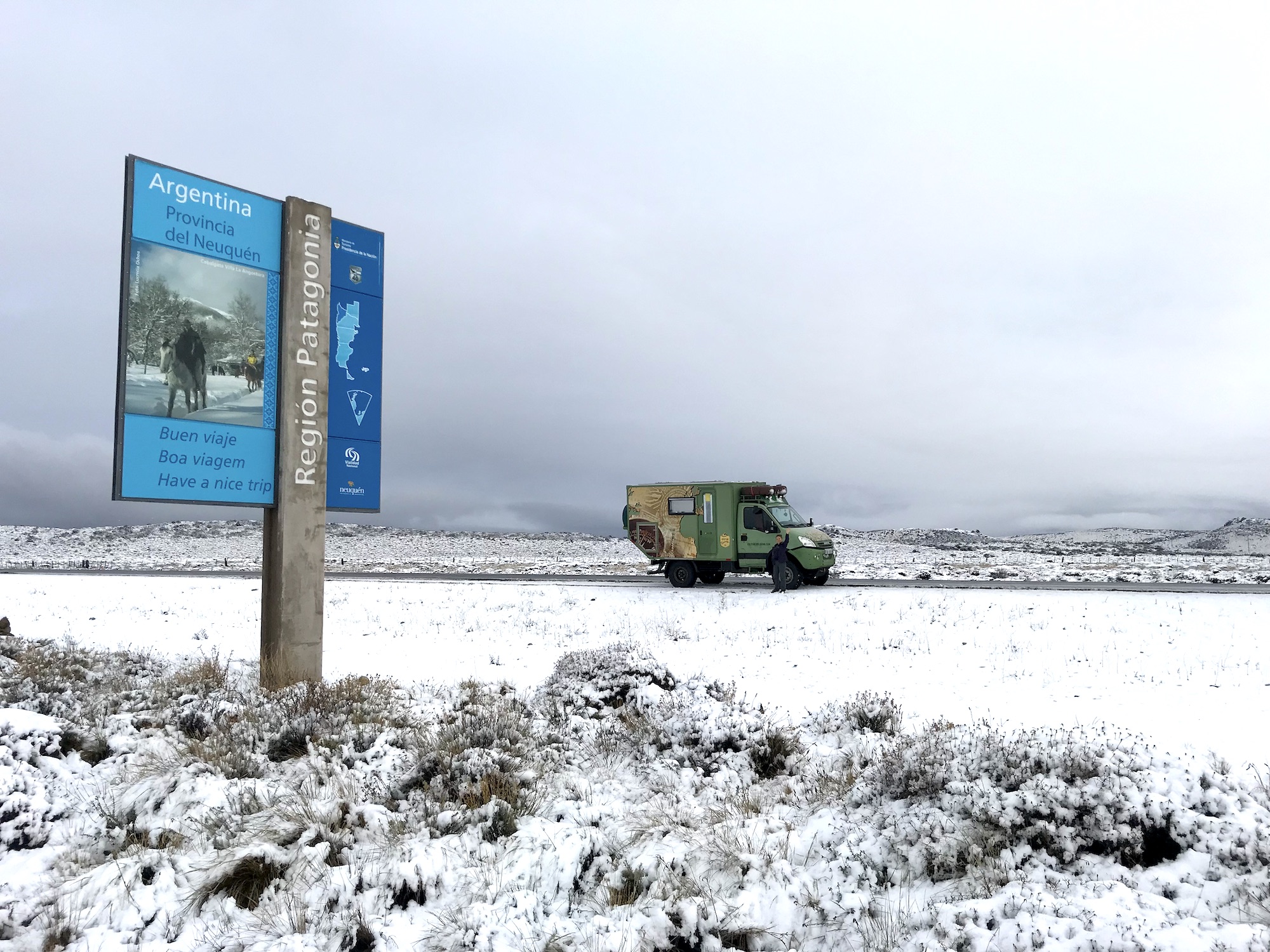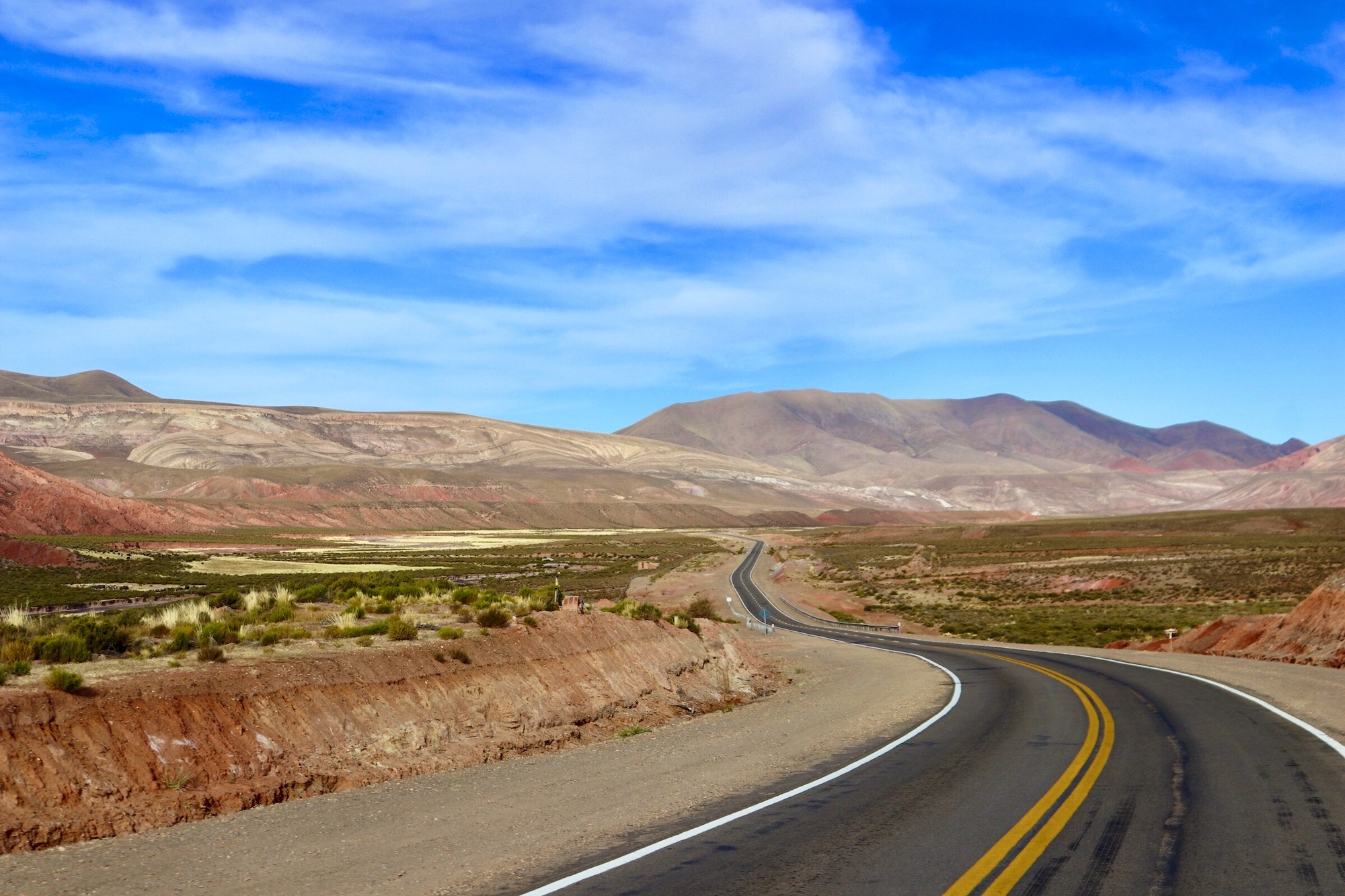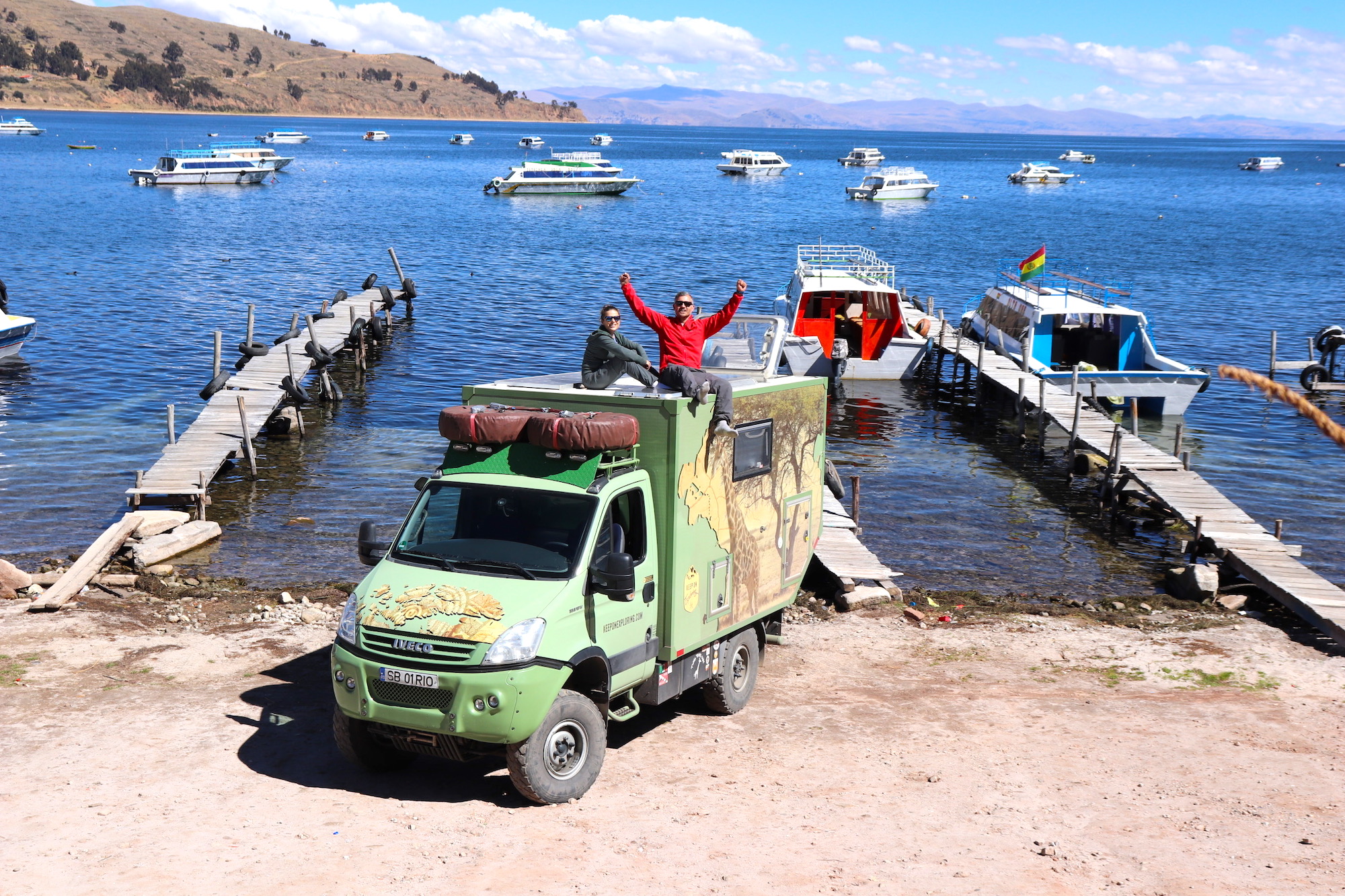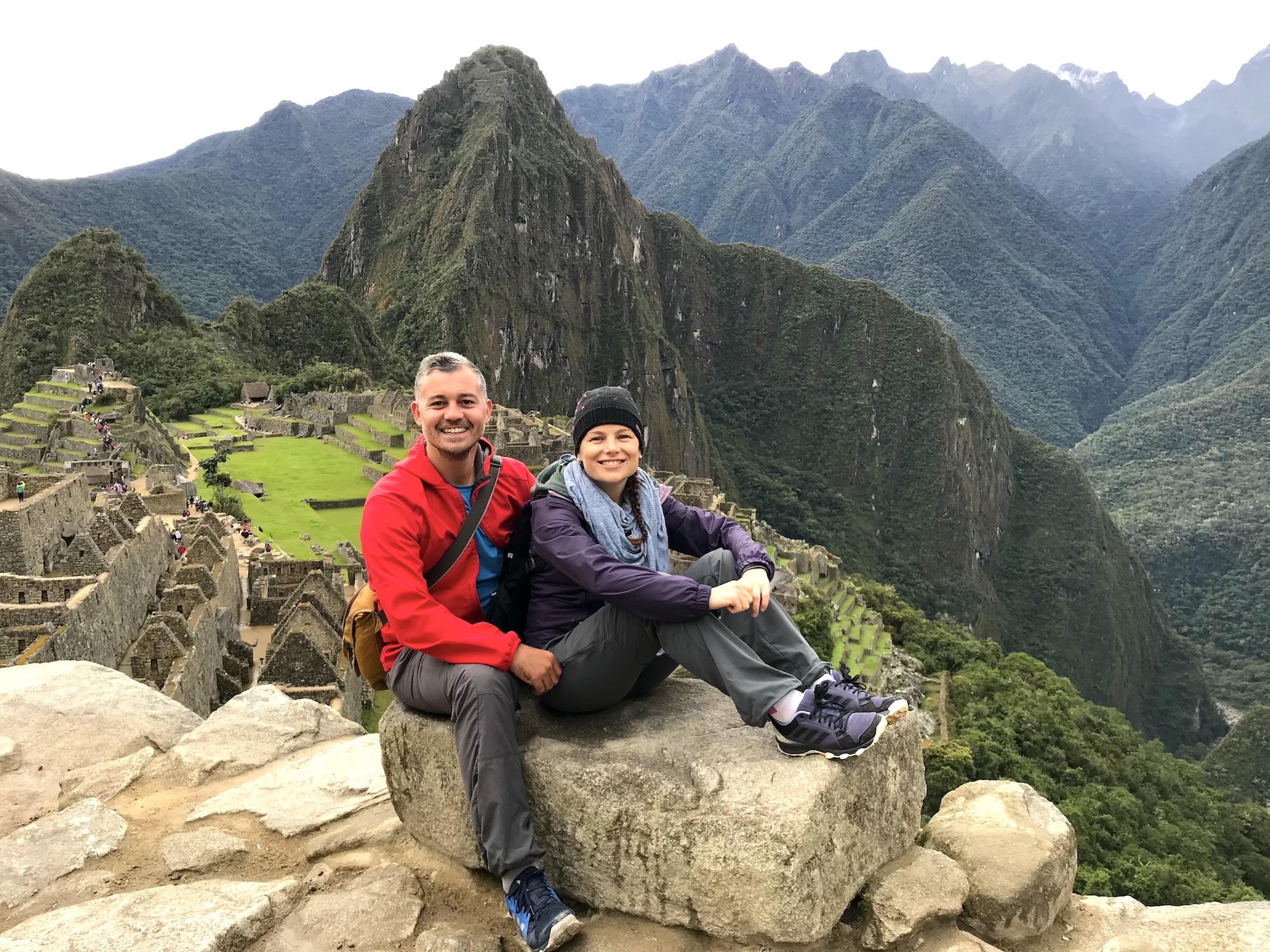Located in a high-altitude valley next to Pichincha volcano, Quito is a capital of true dramatic beauty. The metropolis impressed us with its uniquely scenic views and largely preserved old town. My return to Quito for a second time gave me the chance to explore it from a different perspective, to see it with the eyes of a tourist. I was glad to be back, this time with JP. We have allocated a couple days to stroll around this hilly and historical capital, to taste its authentic cuisine and to learn more about its rich culture.
The weather was rainy and chilly. It was time for us to buy some new outdoor gear and prepare for the winter south the continent.
Short in time, we carried on the “Carretera Panamericana” towards Cuenca, the former regional hub of the Inca Empire, but not before stopping for thermal baths at Baños. When we least expected, we encountered an awesome Austrian couple that later on become our road partners through Peru.
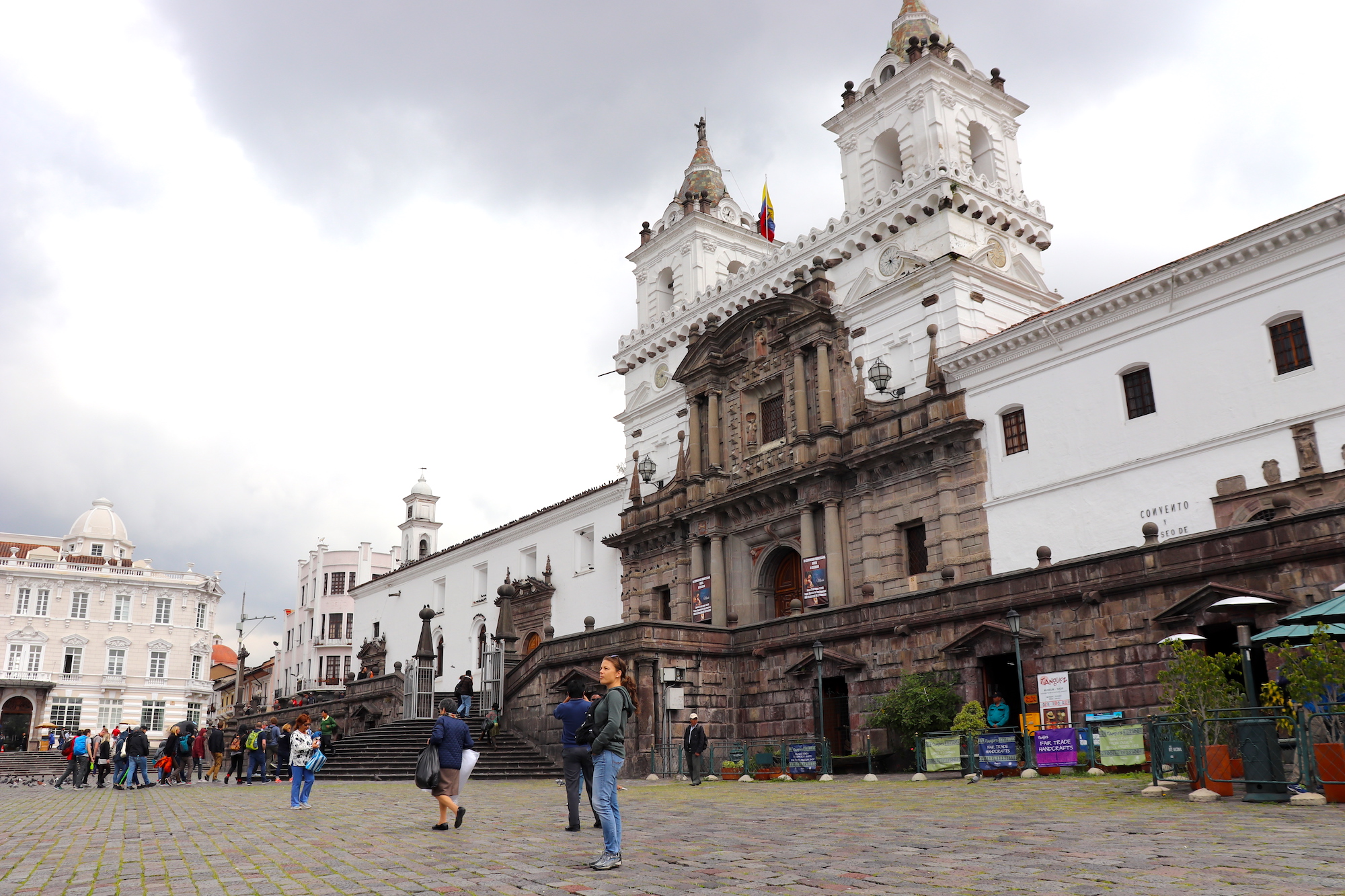
Quito
One of the best ways to get a general understanding and feel for a city’s history, culture, and highlights is to start with a guided city tour. We opted for a free tour since it had good reviews on TripAdvisor. From our experience, it is likely to be led by young and keen guides that put their heart into it, giving the best local tips. So off we went: on the next day, early morning we started the tour through the old town. With so much to see and learn, we could not wait to get it going.
At 2850m altitude, Quito stands out as the second highest capital in the word, just after La Paz. Located on the Guayllabamba river valley and flanked by volcanos, the city offers breathtaking panoramas from different locations within the capital. It was fascinating to look at the metropolis built on hills and mountains and to understand that it was constructed on top of a former Inca settlement. There is evidence indicating people living in the region by 8000BC, even before the Incas. Quito carries a lot of historical weigh and that can be even felt in the mystic mountainous air of the metropolis.
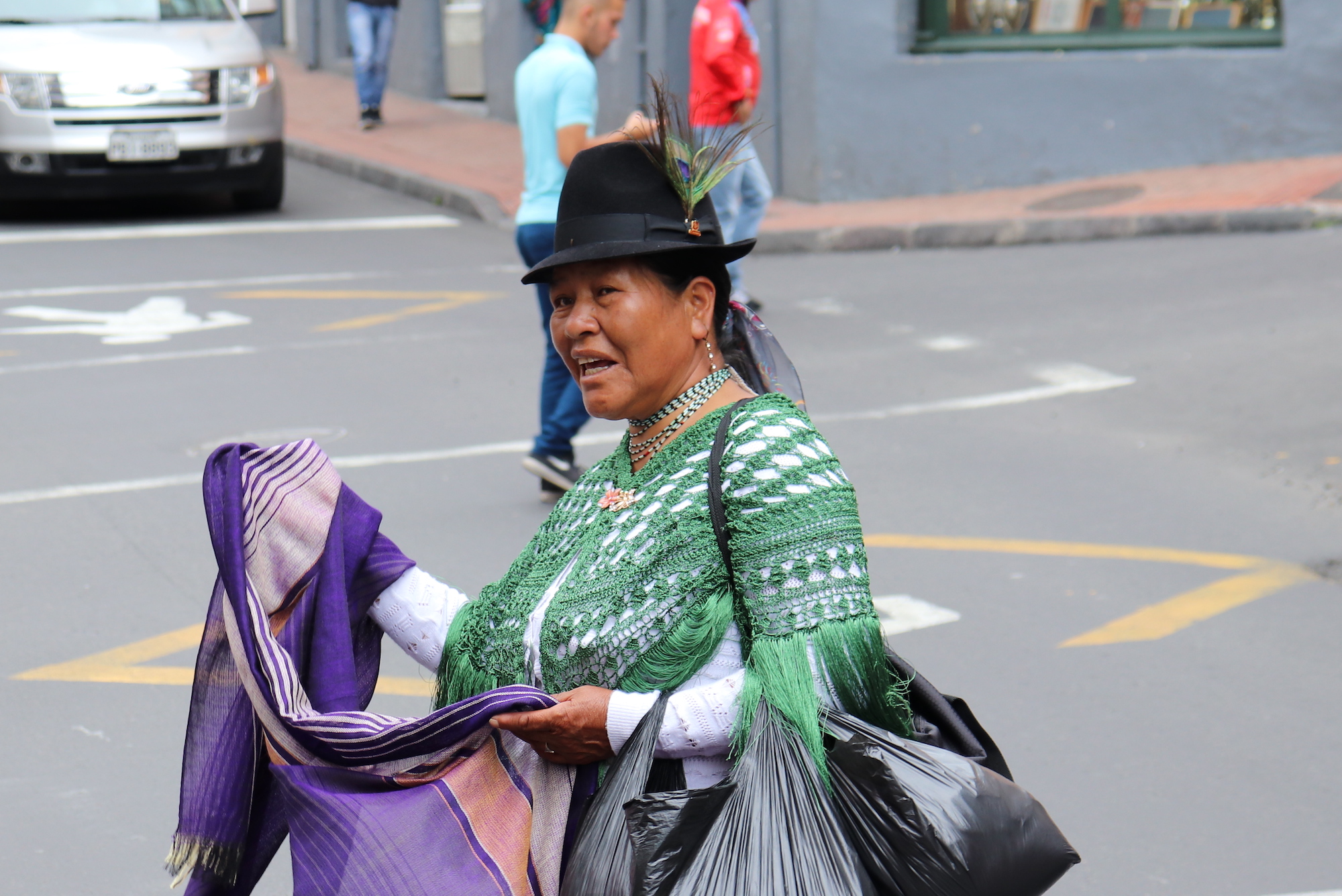
During the tour we stopped at the main buildings and monuments of the old part of town. There are plenty of Spanish colonial houses with hidden patios and cultural gems, restaurants, boutique shops full of souvenirs, from Panama hats to the most delicious locally produced dark chocolate.
We soon reached de nervous center of Quito, and of Ecuador for that matter: the Independence Square. It is an imposing plaza with grandiose buildings, including the Cathedral of Quito, the Municipal Palace and the Archbishop’s Palace. The highlight of the square is the Carondelet Palace, where the President of Ecuador and the government seats.
The tradition is that at every Monday the President salutes the people from Carondelet's balcony, while the military changes the guards on horses, marching with great fanfare. It was a national show, an exhibition of Ecuadorian pride, a symbol of its independence, democracy and freedom of speech.
The square was jam-packed of locals standing with different messages on their placards pro and against the system. It was an opportunity to be heard and pass their messages to the leaders of the country. We enjoyed being there, feeling the heartbeat of Ecuador, waving at the president and watching the military parade.
We had learnt from our guide that Ecuador was once part of “Gran Colombia”, a nation created by the ambitious Simon Bolivar, a local military and political leader.
Inspired by the conquests of Napoleon in Europe, Simon Bolivar dreamt to form a Latin American empire and led the independence from the Spanish occupation in 1820 of what is now Panama, Venezuela, Colombia, Peru, Bolivia and Ecuador. He created a new state called “Gran Colombia”. Bolivar’s dream did not last for too long and the territories of the newly formed state declared their independence after the 1830s due to the large land, its diversity of cultures, interests and the elites support of a decentralized government. This is the reason why the colors of Ecuador’s flag are the same with the colors of the Colombian and Venezuelan flags, our guide explained. Simon Bolivar is considered an icon of modern South America, and one of the heroes of the hispanic independence movements of the 19th century.
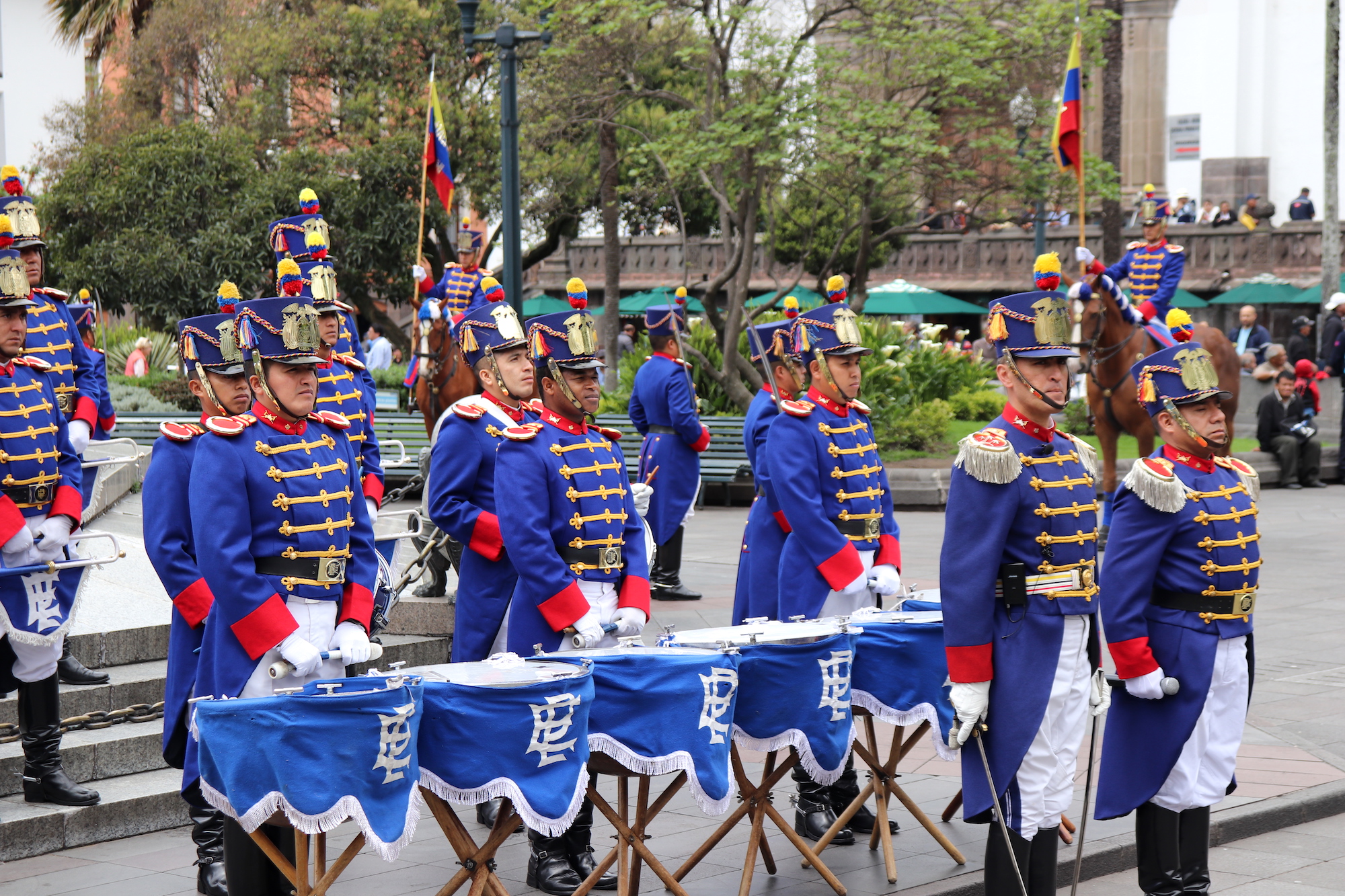
We got some interesting insights about nowadays Ecuador too, on how the country does not have its own currency and it uses the U.S. dollar. In the year 2000 the country went to full dollarization after a financial crisis that saw its own former currency, the sucre, collapse so badly that people started putting their holdings into dollars, unofficially dollarizing the country’s economy. The government simply went ahead and made the switch official. It ended their currency instability, which was seriously hampering foreign investment. In the immediate aftermath of dollarization the country saw an economic surge.
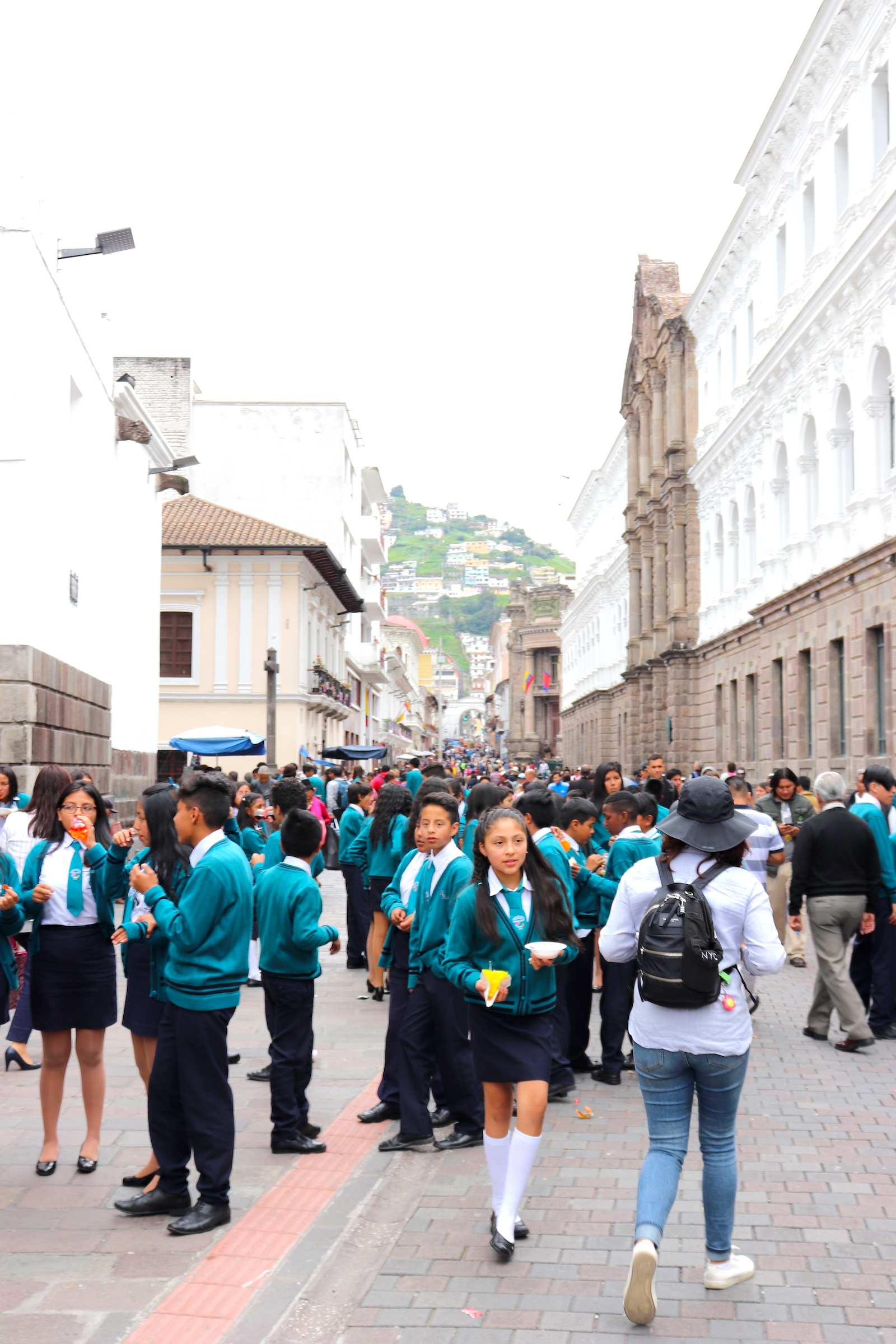
Time flew strolling through the old town of the capital listening the stories of the country and watching the Ecuadorians passing. By midday we were starving and we got off the tour with a great recommendation, heading to one of the oldest restaurants in town for lunch. We ordered the menu of the day: green leaves soup, fried fish with lentils, rice, and ice-cream for dessert. It was a true treat for only 11$ for both of us!
Due to the high altitude, despite Quito being at the Equator line, the capital has a constant fresh air and often cold climate. After such a long time traveling at ocean level, we felt we were a bit short of the right type of gear for a colder climate. We were missing some warm jackets which were taken away when thieves had broken into our truck during Brutus’ shipment from Panama to Colombia, and perhaps a pair of waterproof hiking shoes, we thought.
So, we decided to depart that afternoon through Carolina park towards a shopping center in the search for our new outfit. Crossing the metropolitan park, we encountered a different side of Quito, a modern and cosmopolitan one. We had a genuine introduction into its society composed of all sorts of locals: white, black, mestizo, indigenous, modern and traditional, small, tall, old and young. It was a vibrant mix of people behaving civilized in the organized community. We felt secure walking freely.
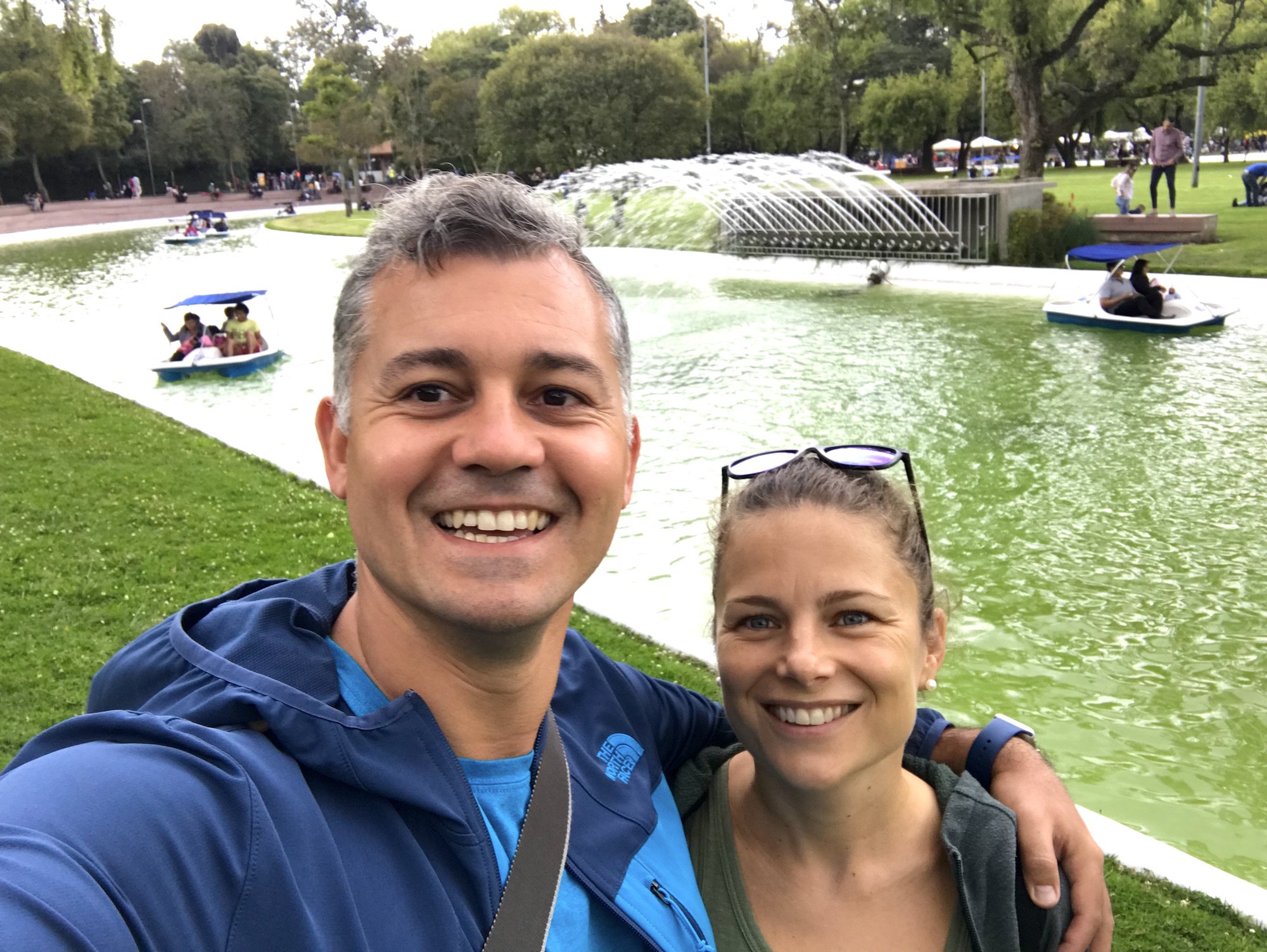
Equipped with new waterproof Goratex shoes, a raincoat, a new pair of trousers and a pair of Crocs to get easily in and out of the truck in wet weather we were ready to drive down south. We had to skip Galapagos Islands unfortunately as it would cost us couple of thousands of euros more and we simply did not have the time with the winter approaching south the continent. This way we made sure we would return to Ecuador again. Galapagos Islands with its endemic species it is a must see.
Tip: for those interested to experience a similar ecosystem to Galapagos but paying much less, there is Isla de la Plata, known to be the ‘poor’s man Galapagos’ :-). It is about an hour journey by boat from Puerto Lopez and one can spot the blue footed boobies, sea lions and turtles. We did not have time not even for this one having to advance straight forward to Peru.
From Quito to Cuenca
Continuing on “Carretera Panamericana" on our way to Cuenca we stopped at Baños, as the name refers: a place where we could take a nice bath :)) Not a regular one, but one with outdoor thermal springs in the valleys of the Andes mountains. We hadn’t taken a proper bath for a while, so we thought it would be a good idea to stop by :)) We arrived very tired after only 200km driving south of Quito. The village was positioned in the heart of a valley of two steep mountains. The site was superb and picturesque.
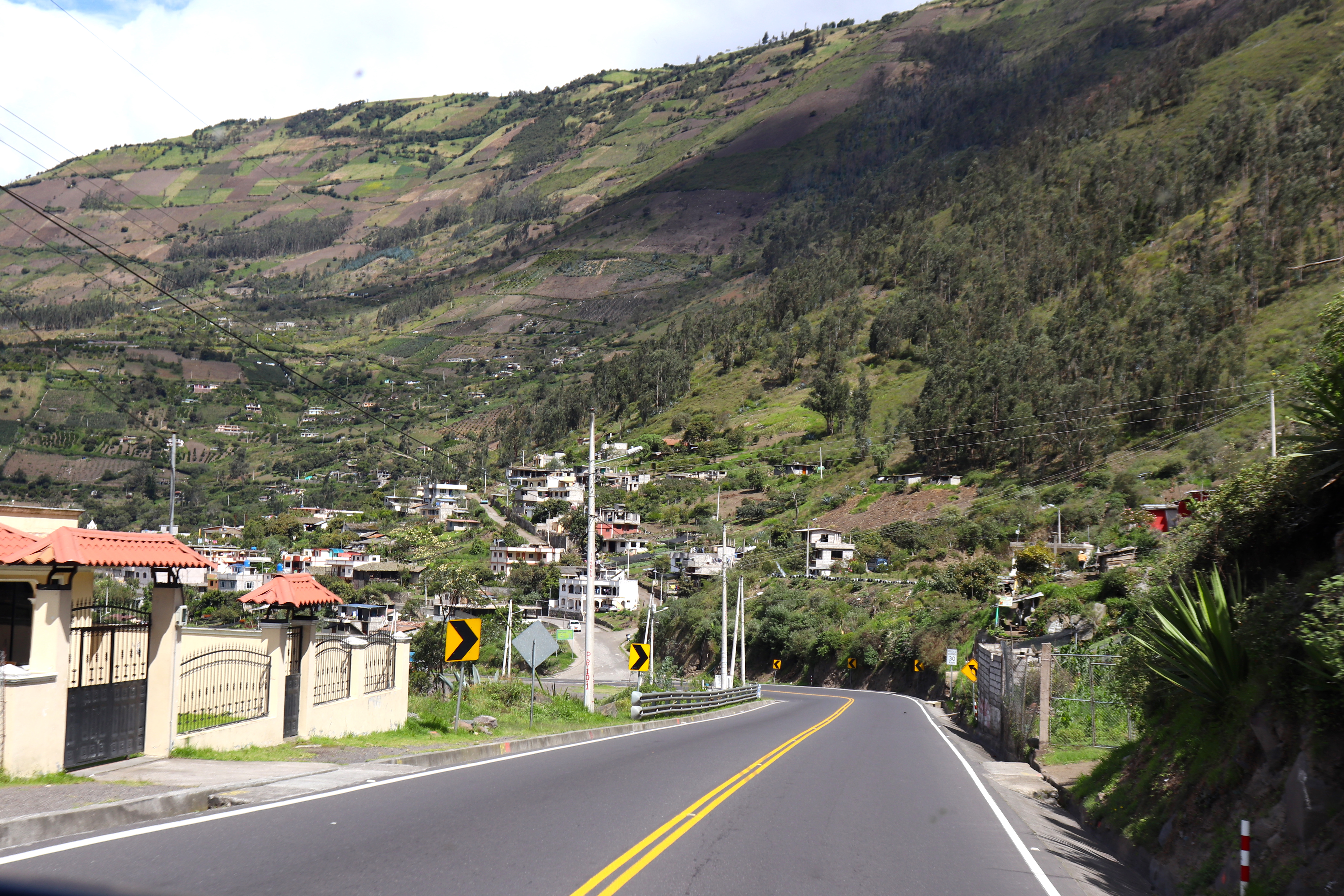
After parking in the courtyard of a guesthouse we were soon ready to check out the thermal bath facilities which were at walking distance. When we got there we found a really outdated and quite primitive place. We were looking at each other: “ Did we get so far for this? It is quite basic, old school ‘communist’ thermal pools”, JP was mentioning laughing. We were actually surprised to see how many people were queuing to get in there. We paid 3$ fee per person and 1$ for a swimming hat. Here we go!
Despite the basic infrastructure, the thermal waters were relaxing. JP had a blast trying all the pools available, from extremely hot to very cold. I soon started to feel contractions in my abdomen, a sign that the baby was not feeling comfortable. I exited right away the hot water and felt better again. I understood immediately that our little ‘bean’ did not like the thermal waters. Asking the personnel if it was ok to enter while pregnant, they said it was not recommended to stay for long. Stupid me, I should have known better. At least I could enjoy relaxing the tips of my toes in the pools :)) On another hand JP left refreshed and ready to sleep like a baby.
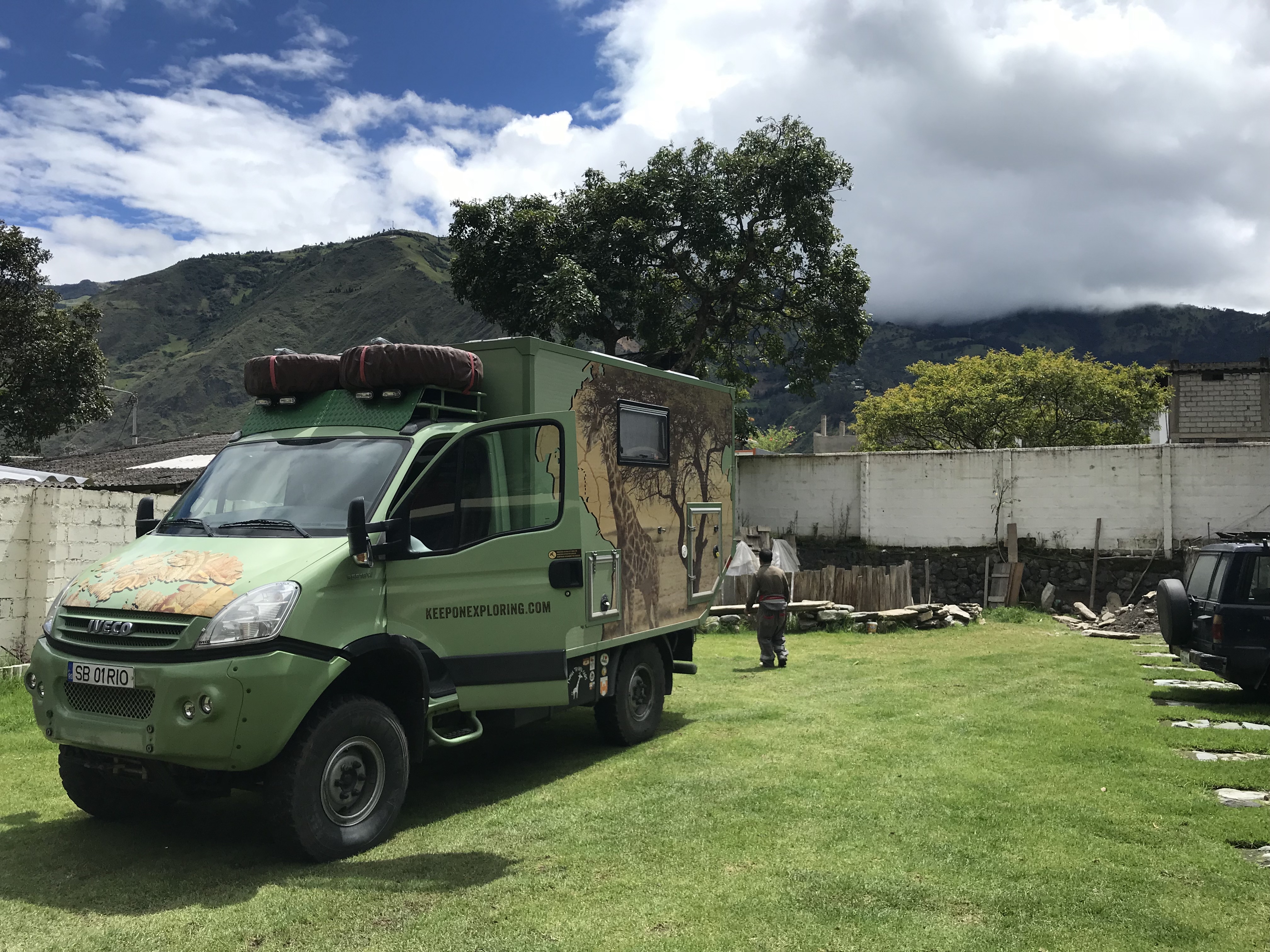
The following day we continued our journey to Cuenca. And although we were just 300km away we could not make it in one day through the curvy mountainous roads. We decided to stop by an authentic and enchanting mountain town called Alausi. When we arrived at Killa Wasi Campspot the owners were not at home. An indigenous family which was taking care of the property welcomed us in their absence. They were: “You can come in, but the owners are not home. I hope you don’t mind”. Their answer made us smile. We just needed to overnight in a safe place on our way to Cuenca. They were such a shy and humble family, kept looking at us wondering, being very responsive to any question we would address and would not ask any. We liked that for a change :))
We rested that afternoon. I was getting more and more tired from the continuous driving.
The following day on our way to Cuenca we could not stop being amazed by the impressive views to the Andes and the picturesque mountain villages located in the abrupt valleys. Despite the splendid landscapes, frankly I could not wait to get to Cuenca and rest for a while.
Cuenca
When the Incas arrived in the region of Cuenca, they were so impressed by the territory and called it “the land as big as heaven”. Soon they transformed it into a second regional capital of the empire, after Cusco. Later on the Spaniards took over the city and colonized it. Nowadays the pleasant mountain town is listed as UNESCO World Heritage Site due to its preserved colonial Spanish architecture. Tourists come here to explore as well the nearby Cajas National Park famous for its evergreen meadows, tundra, forests, lakes, and wildlife. We were hoping to experience all these as we had bought the right gear in Quito.
We chose to stay close to the city center at “Tu Parada en Cuenca” guesthouse, ten minutes walking distance from the old town. It was the courtyard of a residence. Miriam, the host, was very attentive and so excited to receive us. She was: “ I am thrilled! You have the biggest truck that ever entered my patio. You are the first Romanian I ever met” :-). We hardly made it into the patio, almost having to squeeze in, but Miriam was so excited that we forgot about the inconvenience to barely being able to open the door of the truck :-)). She would keep saying smiling: “Mi casa es tu casa”. One day she even prepared a traditional breakfast for all the travelers staying at her place. A hospitality and engagement we had rarely seen.
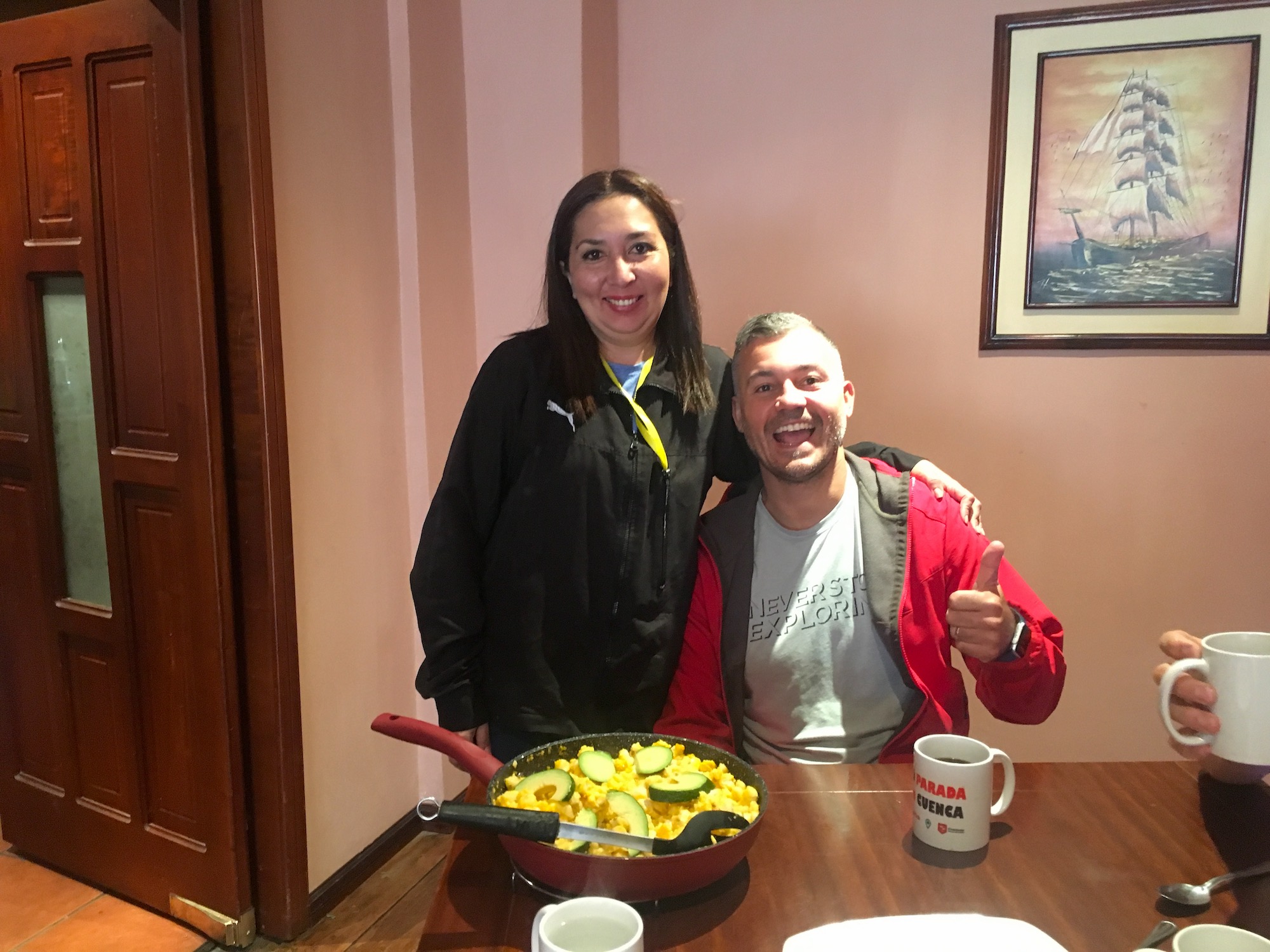
In the old town of Cuenca we encountered a lively atmosphere with an impressive exhibit of historical buildings, churches, lots of boutique coffee bars and restaurants. We were happy to be able to walk around and exercise a little bit after so much sitting in the truck on curvy roads.
Since the rainy season started, we decided not to visit Cajas National Park as we could struggle in very wet terrain. It had the potential to turn into something more unpleasant than pleasant, especially considering my pregnancy. Staying at Miriam’s house was exactly what I needed at that moment. A warm and comfortable place where we could just regroup and prepare for our next country visit, Peru. We had to study the routes, main points of interest, attractions we should not miss and analyze the risks. So, we stayed put in Cuenca for few days.

The best part of this stop over was meeting an Austrian couple, Anna Maria and Gerald which were returning to town to fix the breaks they had lost in the mountains. I remember their happy attitude and smiley faces as they entered Miriam’s property, even though they were in a difficult situation without breaks. From the very beginning Anna Maria and Gerald made a positive impression on us, and we became friends right away. We decided to have lunch together at an Austrian cafeteria over a Wiener schnitzel. The conversations went on for hours watching football, eating and sharing our traveling experiences until evening, when they joined us for a glass of red wine inside our truck. Anna Maria and Gerald are awesome people with open minds and hearts. We truly hoped to meet them again on the road! By then we had no idea that they would become our road partners throughout the beauties of Peru.

The following day, after Miriam’s traditional breakfast, we had to say goodbye to everyone and left towards the borders with Peru. We decided to cross in Huaquillas, where we would be cruising on the north coastline of Peru. It was the fastest route to Lima, on our way to Cusco and Machu Pitcchu. So it was a no brainer. But the route presented plenty of reports of robberies, some of them at gun point on iOverlander. We would have to be very careful in the region. One of the few times I was worried to be honest.
The road from Cuenca to the border of Peru was surprising as we discovered a complete change in ecosystems and climate in one single day. Cuenca is located at 2560m altitude, while the border was at sea level. From pine trees, meadows, and green valleys we entered into a drier and desert environment with sparse vegetation as we descended from altitude. By the time we arrived at the frontier it was ‘summertime’ again. We had to take off our jackets, the hiking shoes and wide open our windows.
Our time in Ecuador was short but a pleasant ride crossing the country on the “Carretera Panamericana” through the green valleys of the Andes with their snow-capped volcanos. We were delighted to mark the Equatorial line at Ciudad Mitad del Mundo and experience again the highlands of the cultural Quito. We made new friends like Anna Maria and Gerald and met great hosts like Miriam and Hans.
It gave us so many reasons to return and explore its abundance of national parks with their rich flora and fauna, the Amazonian jungle, the sunny Pacific coastlines and the iconic Galapagos Islands. It all shouts for us to go back one day.
